- FAMILY & PARTNER VISAS
- Employer Sponsored
- Tourist Visas
- Permanent Resident & Citizenship
- Other Services
- English Courses
- Higher Education
- Vet Courses
- Working Holiday Visa
- I NEED STAFF
- General info
- Address: Suite 14.02, L14, 56 Pitt Street
- Email Address: [email protected]

Agenzia di immigrazione ed educazione

Work Visas in Australia: Can I work legally on a tourist visa?
The Tourist or Visitor Visa in Australia has specific conditions for those who hold it. This blog post will talk about those requirements and which sort of visas that allow you to work in Australia.
The visa subclass 600 allows you to be in Australia as a tourist, for a cruise, or for medical treatment, for up to 12 months. Yet, working is not permitted.
Actually, in order to apply for a Tourist Visa, you must have a round-trip plane ticket, as well as a defined trip journey. Additionally, for each trimester you will spend on your trip, you should have $6.000 AUD which should be reflected in your bank statement.
However, if you are thinking about staying in Australia while working or studying, there are other visa types you can apply for.
Which visas allow me to work in Australia?
Student Visa (subclass 500) By holding this visa, you are able to stay in Australia for up to 5 years and in line with your enrolment.
Key to know: You can apply online in or outside the country
Also, you can:
- be enrolled in a course of study in Australia
- work unlimited hours in any sector (before it was only 40 hours per fortnight)
- Bring your family members
Read more about i nternational students’ work limitations in Australia

Working Holiday visa (417) and Work and Holiday visa (462)
First of all, it is key to clarify that subclass 417 is mostly for European countries, such as Belgium, France, Germany and others. Whereas, subclass 462 applies to others like Argentina, Uruguay and Chile.
These 2 visa types let people 18 to 30 years old (with some exceptions) have an extended holiday in Australia and work here to help fund their trip.
Read more: Working Holiday Visa: Age limit increased to 35 years
Regarding the requirements to apply, we can highlight a University Degree certificate and IELTS certificate for subclass 462, and High School Degree for subclass 417.
- You must have a passport from an eligible country
- You can work while you are here
- You can apply for a second Work and Holiday visa if you meet specific eligibility criteria
*If you want to know more, send us an email at [email protected]*
Australian Government endorsed events (COVID-19 Pandemic event)- subclass 408
With this visa you can:
- Remain in Australia for 12 months if you are working or have a job offer to work in critical sectors ( click here to know which sectors are considered )
- Remain in Australia for 6 months if you are working or have a job offer to work in any other sector in Australia
- Include members of the family unit in your application.
At the time of application you must:
- have evidence of your employment or an offer of employment
- hold a substantive visa with work rights that expires in 90 days or less, or that expired 28 days ago or less.
Click here to read more about COVID-19 Visa.

Are you still confused about if you’re eligible to apply for any of those visas? Book a FREE consultation with our team!
For English or Italian, click here.
For Spanish, click here.
Drop us a line and we will get back to you soon [email protected]

Facebook Atlas Migration
Leave a Reply Cancel reply
Your email address will not be published.
You may use these <abbr title="HyperText Markup Language">html</abbr> tags and attributes: <a href="" title=""> <abbr title=""> <acronym title=""> <b> <blockquote cite=""> <cite> <code> <del datetime=""> <em> <i> <q cite=""> <s> <strike> <strong>
Name * This field is required.
Email * This field is required. Please enter a valid email address.
Save my name, email, and website in this browser for the next time I comment.

Is it legal to look for work in Australia on a tourist visa?
- July 14, 2023
Welcome to your holiday in Australia, a destination that entices holidaymakers, tourists, and visitors from across the globe.
Each year, a significant number of tourist visas are processed, opening the door for countless individuals to explore this captivating continent country.
Between June and December 2022 alone, an impressive 612,530 visitor visas were granted, reflecting the immense popularity of Australia as a sought-after holiday spot.
From the iconic Sydney Opera House to the pristine wonders of the Great Barrier Reef, this remarkable land boasts a wealth of natural marvels and cultural treasures that continue to draw holiday -makers from far and wide.
Whether you yearn for the rugged beauty of the Outback, the sun-kissed beaches of the Gold Coast, or the vibrant ambiance of Melbourne, Australia promises a holiday experience like no other.
Immerse yourself in the enchanting allure of this diverse land, as you create cherished memories that will forever hold a place in your heart.
A visitor visa (subclass 600) is a temporary visa that allows holders to holiday in Australia as a tourist, visit family and friends, or go on a cruise from an Australian port.
But can I look for work on a holiday – tourist visa?
Those holidaying on a tourist visa are not permitted to look for work in Australia while holding this visitor visa .
Anyone wishing to visit Australia for a holiday as well as work should consider other visa alternatives such as a working holiday visa .
More information about holiday – tourist visas
Holiday – Tourist visas are granted to those who wish to visit Australia as a tourist whether to sight-see, visit family and friends, go on a cruise, or for any other purpose except for business or medical treatment.
Holders of a subclass 600 visitor visa can only stay for the period or dates specified on their visitor visa grant letter. The length of stay granted for each tourist visa varies for each applicant.
When processing applications, the Department of Home Affairs considers factors such as how long an applicant may want to stay in Australia as well as why they want to stay.
Applicants can request a preferred length of stay, however, it may not be granted.
Generally, a stay of three months is granted but a stay of up to 12 months may be approved in certain circumstances.
Tourist visa holders may study or train in Australia for up to three months, however, if the main reason for visiting Australia is for study, then a student visa may be more appropriate.
To be granted a visitor visa , applicants must:
- Intend to come to Australia to visit – holiday only
- Have enough money for their stay in Australia
- Not work in Australia
- Strong incentive to return home
- ( Visitor visa can be lodged onshore and the applicant needs to be in Australia when the decision is made)
A visitor visa can be granted with single or multiple entry. If a visa is granted with multiple entries, visa holders may leave and return to Australia for as long as the visa is valid.
If a visitor visa holder has been granted a visa with single entry and leaves Australia, they will have to apply for another visa to return.
A tourist – visitor visa cannot be extended. (The visitor visa holder can lodge another visitor visa while in Australia to extend their stay, strong evidence will need to be provided.)
In order to stay in Australia longer, visa holders must apply for another visa and will only be eligible if their current visa does not have a condition preventing them from staying longer in Australia.
Family members cannot be included in a tourist visa application. Each family member wanting to visit and holiday in Australia must submit an application for their own visa.
As with any visa, applicants must meet eligibility criteria to be considered for a visitor visa . Eligibility requirements include:
- Meeting health requirements
- Meeting character requirements
- Paying any outstanding debts to the Australian government
The cost of health checks, biometrics, police checks, etc in order to meet eligibility criteria are the responsibility of the applicant and are in addition to the visa application fee.
Visitor visa holders are also responsible for any healthcare costs they may incur while in Australia.
Tourist visas can take anywhere from five days to 30 days to process.
If you would like to learn more about visitor visas for your next holiday to Australia or any other visa, contact the experienced team of registered migration agents at Visa Solutions Australia. Book a consultation.
Recent Posts

VETASSESS: What You Need to Know

Operation Sovereign Borders
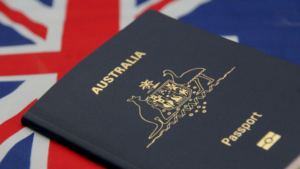
Integrity at the Forefront of Australia’s Migration Strategy

Where Are All the Aged Care Workers?

Personalised assistance and consulting service for Australian Immigration services for both individual and businesses.
Subscribe To Our Newsletter
Contact info.
National Toll free: 1800 828 008 Mail: PO Box 369, Leederville WA 6903
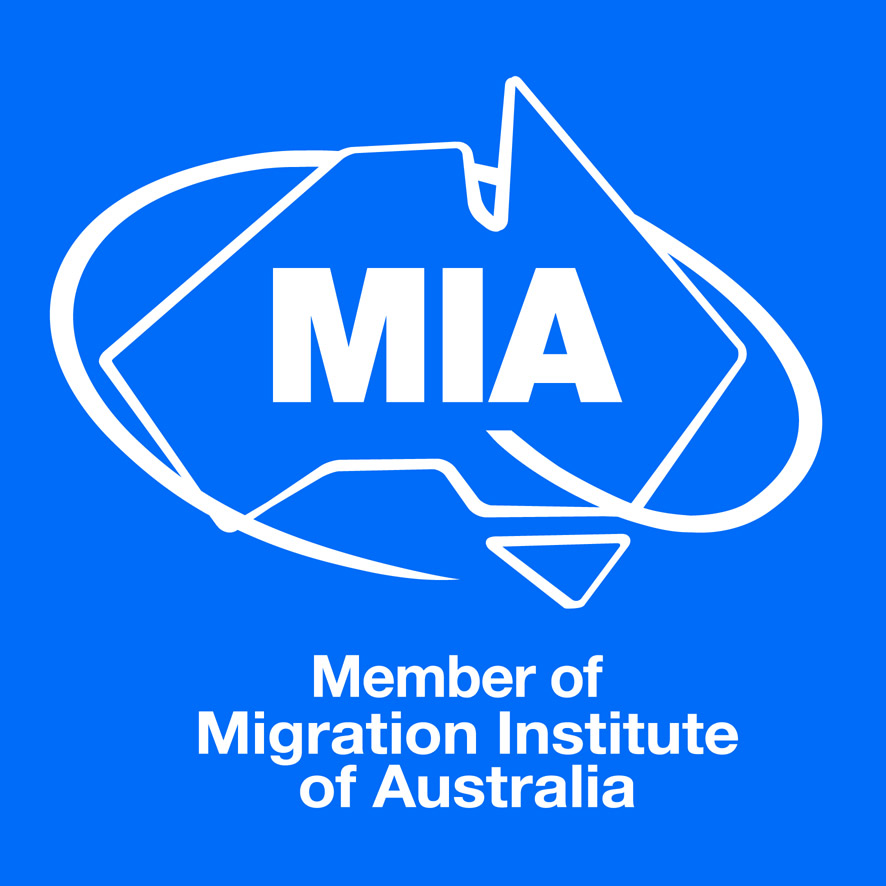
Quick Links
Where we are.
Migration Agent Perth Level 3, South Shore Centre, 85 South Perth Esplanade, South Perth WA 6151 Tel: +618 9328 2664
Migration Agent Sydney Level 1, 5 George Street, North Strathfield NSW 2137 Tel: +612 8318 4777
Migration Agent Melbourne Level 8, 276 Flinders Street, Melbourne VIC 3000 Tel: +613 8595 9133

Can You Convert a Tourist Visa to a Work Visa in Australia?
When planning a trip to Australia, many individuals might wonder if it is possible to convert their tourist visa into a work visa. While the answer is not a simple yes or no, there are certain pathways available for individuals who wish to work in Australia after entering the country on a tourist visa.
Requirements for Converting a Tourist Visa to a Work Visa
1. Eligibility: To convert a tourist visa to a work visa in Australia, you must meet the eligibility criteria set by the Australian government. This may include having a job offer from an Australian employer, possessing the required skills and qualifications for the job, and meeting health and character requirements.
2. Visa Options: There are different visa options available for individuals who want to work in Australia. Some of the common work visa categories include the Temporary Skill Shortage Visa (subclass 482), Employer Nomination Scheme Visa (subclass 186), and Skilled Independent Visa (subclass 189).
3. Applying for the Work Visa: Once you meet the eligibility criteria and have chosen the appropriate work visa category, you can submit your application online through the official Australian government website or seek assistance from a registered migration agent.
Steps to Convert a Tourist Visa to a Work Visa
1. Research Visa Options: Before converting your tourist visa to a work visa, it is essential to research and understand the available visa options and their requirements. Each visa category has specific criteria that must be met.
2. Check Eligibility: After identifying the visa category that suits your situation, ensure that you meet the eligibility criteria. This may include having a valid job offer, meeting the skills assessment requirements, and demonstrating sufficient proficiency in the English language.
3. Gather Required Documents: Prepare all the necessary documents required for the work visa application, such as proof of identity, academic qualifications, employment references, and health and character assessments.
4. Lodge the Application: Submit your work visa application online through the Australian governments official website or consult a registered migration agent for assistance. Pay the applicable visa fees and provide all the required information and supporting documents.
5. Wait for a Decision: After submitting your application, the Australian government will assess your eligibility and make a decision. The processing time varies depending on the visa category and individual circumstances.
6. Receive the Visa Grant: If your work visa application is approved, you will receive a visa grant notification. The notification will specify the visa conditions, duration, and any additional requirements.
It is important to note that converting a tourist visa to a work visa is not guaranteed and depends on various factors. It is advisable to seek professional advice and assistance to ensure a smooth and successful visa application process.
Search Visa and Apply Now
Recent post, blog search by country.
Problem loading mint-content-page app.
Things aren't going well... have you tried refreshing the page and are you using an up to date browser? If so, and you still see this message, please contact us and we'll help you out.
NDIS MyPlace Participant will be temporarily unavailable from 12:00am to 12:00pm AEST Sunday 14 April 2024 due to scheduled maintenance.
NDIS Provider Portal will be temporarily unavailable from 12:00am to 12:00pm AEST Sunday 14 April 2024 due to scheduled maintenance.
You've been on this page for at least 10 minutes.
For your security, we'll sign you out of myGov in 5 minutes.
Finding work as a visa holder
Skilled migration program.
As part of the skilled migration program, visas are available if you have skills and training in some occupations.
Find these occupations on the skilled occupation list on the Department of Home Affairs website.
If your skills match the skilled occupation list, you may be able to come to Australia as a skilled migrant.
You can start by expressing interest in applying for a visa to live and work in Australia.
Find out about submitting an expression of interest and getting your skills assessed on the Smart Move Australia website.
Pacific Australia Labour Mobility (PALM) scheme
If you’re from one of the eligible Pacific Island countries or Timor-Leste, you may be able to join the PALM scheme.
Through this scheme, you can get temporary short-term or long-term work in agriculture or other industries.
The PALM scheme lets you gain valuable skills and experience and send income back to your family and community.
Find out more about how to apply on the PALM scheme website.
Looking for work
There may be other support available while you look for work in Australia if you have a temporary or permanent visa.
Find out more about looking for work .
Starting a business
You can start a business in Australia even if you’re not an Australian citizen.
Find out what you need to do to start a business as a non citizen on the business.gov.au website.
You can start by expressing interest in applying for a visa to live and work in Australia.
Find out about submitting an expression of interest and getting your skills assessed on the Smart Move Australia website.
Thank you for your feedback
Login Register
Pay calculator tool
Find wages and penalty rates for employees.
Leave calculator tool
Work out annual and personal leave
Shift calculator
Rates for your shifts
Notice and redundancy calculator
- Accessibility
- Subscribe to email updates
- Visit Fair Work on YouTube
- Visit Fair Work on Twitter
- Visit Fair Work on Facebook
- Visit Fair Work on Instagram
- Visit Fair Work on LinkedIn
Automatic translation
Our automatic translation service can be used on most of our pages and is powered by Microsoft Translator.
Language help
For professionally translated information, select your language below.
Popular searches
- minimum wages
- annual leave
- long service leave
Visa holders and migrants
Closing Loopholes: Additional Fair Work Act changes
The Australian Government has made further workplace laws as part of its ‘Closing Loopholes’ changes.
This may affect the information on this page.
Learn more at Closing Loopholes: Additional Fair Work Act changes .
For workplace advice in your language, you can:
- translate pages by choosing your language from the menu at the top of the page
- find information and resources in our Language help section
- call the Translating and Interpreting Service on 131 450 and ask them to call us on 13 13 94.
Visa holders and migrant workers have the same workplace entitlements and protections as all other employees in Australia.
We provide free advice and assistance to all workers to help them understand these legally enforceable rights.
On this page:
Protections for migrant workers, pacific australia labour mobility scheme, pay and conditions, how we can help, tools and resources, related information.
The Fair Work Ombudsman is here to help you. We are an Australian Government agency who helps regulate Australian workplaces. You can't get into trouble or have your visa cancelled for contacting us to ask for information about your pay or other workplace rights.
Find out more about How we can help .
Case study – Vivek’s story
Vivek, an aged care worker, shares his story about how the Fair Work Ombudsman was able to help him understand his workplace rights and obligations. This gave him the knowledge and confidence to resolve his workplace issue.
Migrant workers in Australia have the same entitlements and protections under the Fair Work Act as other employees. This includes for things like:
- pay and wages
- protection from discrimination
- notice of termination and final pay.
Migrant workers continue to have these entitlements and protections regardless of their migration status under the Migration Act 1958 . This includes situations under the Migration Act when a migrant worker:
- has breached a condition of their visa
- doesn’t have work rights, or
- doesn’t have the right to be in Australia.
There may still be consequences under the Migration Act for migrant workers who don’t comply with their visa conditions or that Act. A breach of the Migration Act also doesn't affect the validity of an employment contract or a contract for services under the Fair Work Act.
For example, there may be situations where a worker on a student visa works over the cap of the hours they’re allowed to work under their visa. The worker is still entitled to receive their full workplace entitlements for all hours worked despite this breach. The worker also has the right to apply to a court or tribunal to recover unpaid wages and entitlements.
If you’re a migrant worker in breach of your visa conditions, you can still ask for our help to receive your minimum entitlements.
Example: Migrant worker not being paid for time worked
Leon is a kitchen hand in a restaurant. He has a student visa which only allows him to work for 48 hours per fortnight. Over the past month, his boss, Sam, makes him work 60 hours a fortnight.
When Leon checked his pay slips, he realised he was only paid for 48 hours each fortnight, not the 60 hours he worked.
When Leon raised the underpayment with Sam, Sam told Leon that Leon’s visa only allows him to work for 48 hours per fortnight. Sam also said he won’t pay Leon for the other 12 hours.
Leon knows that working more than 48 hours each fortnight may be breaching his student visa. But he also knows he is entitled to the entitlements and protections under the Fair Work Act.
Leon decides to contact us (the Fair Work Ombudsman) for information and help on what he can do next.
It's important to know the rules for your visa. Your visa may limit the type of work you can do in Australia. Some visas have rules about how many hours you can work (for example, international students), or what job you can do (for example, a seasonal worker).
The Department of Home Affairs (Home Affairs) can give you information about:
- which visa to apply for
- your rights and responsibilities under a visa
- how to change and cancel your visa
- how to apply for permanent residency.
To check your current visa details and conditions you can:
- use Visa Entitlement Verification Online (VEVO)
- contact the Department of Home Affairs .
For more information on workplace conditions for certain visa types, read our fact sheet on 482 and 457 visa holder's workplace rights and entitlements .
Paying for visa sponsorship
It's illegal for someone to ask for, receive, offer or provide a benefit in return for visa sponsorship or employment that requires visa sponsorship. This is called 'paying for visa sponsorship'. Examples of this include:
- an employer makes someone pay them money in exchange for sponsoring them on a Temporary Skills Shortage (TSS) visa (subclass 482)
- an employer makes someone pay back some of their pay each week in exchange for a visa.
If you think your employer is engaging in 'paying for visa sponsorship' activity you can contact the Department of Home Affairs .
Cashback schemes
Cashback schemes are also illegal. A cashback scheme is where an employer unreasonably requires someone to pay them in exchange for a job.
For more information, see Deducting pay and overpayments .
If you need our help about any deductions, cashback schemes or if an employer is asking for payment of any kind as a condition of a job offer, you can Contact us .
Visa protections – the Assurance Protocol
Your employer can't cancel your visa, even if you've breached your visa conditions. Only Home Affairs can grant, refuse or cancel visas.
We have an arrangement with Home Affairs to support visa holders who come to us for help. Under this arrangement, visa holders can seek help without fear of visa cancellation, even if they've breached their work-related visa conditions. For more information, see Visa protections - Assurance Protocol .
The Pacific Australia Labour Mobility (PALM) scheme supports Australian businesses in hiring workers from 9 Pacific islands and Timor-Leste when there are not enough local workers available.
All employees under the PALM scheme have the same workplace rights as other employees in Australia. Find out more about your rights and entitlements on our Pacific Australia Labour Mobility scheme page.
For more information about the scheme, visit the Australian Government's Pacific Australia Labour Mobility (PALM) scheme website .
Visa workers are entitled to the same minimum pay rates and workplace conditions as any other Australian employee with the same job in their workplace.
There are minimum pay rates that you have to be paid, based on the work you do. To find out the minimum pay rates for your job, use our Pay and Conditions Tool .
Salary requirements
Some visas have extra salary requirements. Find out more about salary requirements for 482, 186 and 187 visa holders on the Department of Home Affairs website .
Your employer needs to give you a payslip every time you get paid. To find out what a pay slip is and what should be on it, see Pay slips .
Hours of work
You can easily keep track of how long you've worked for with our Record my hours app , which is available in multiple languages.
Minimum conditions
You also have minimum conditions at work. Conditions are rules about what employees get at work, such as how many hours they work and how often they get a break. These conditions are set out under law and in legal documents including:
- an enterprise agreement
- the National Employment Standards .
We have information in different languages to help you understand your pay and what minimum conditions are when working in Australia on our Language help pages.
You can also watch our short video for information about Working in Australia.
Tax and superannuation
When you start a new job, you need to give your employer your Tax File Number (TFN). Your employer will take out tax from your salary or wage. Your payslips will show how much tax has been taken out.
For more information about tax, visit the ATO website .
If you're a temporary resident working in Australia, your employer may also have to pay super for you. Find out more about Super for temporary residents leaving Australia on the ATO website .
If you need our help, you can:
- read our step-by-step guide on how to fix a problem if you’re a migrant worker being treated unfairly
- call us on 13 13 94 (you can get a free interpreter by calling 13 14 50 first)
- tell us if you’re having a problem anonymously using our anonymous report form
- register for My account and ask us a question via our online form .
Getting help - International students
International students can come to us for help if they’re having workplace issues, without fear of their visa being cancelled. They can come to us for issues like not getting the right pay or other entitlements, like leave or notice of termination.
We have case study videos about how you can get help and how we can help resolve issues. Find out more on our Young workers and students page.
For information to help students studying and working in Australia, read our International students fact sheet .
- Pay and Conditions Tool
- Record my hours app
- Visa holders and migrant workers - workplace rights and entitlements fact sheet
- International students fact sheet
- Working the harvest trail
- Workers compensation
- Unpaid trials
- Student placements
- Safe Work Australia - Working safely in Australia information sheet
Have a workplace problem?
Problems can happen in any workplace. If you have a workplace problem, we have tools and information to help you resolve it.
Check out our Fixing a workplace problem section for practical information about:
- working out if there is a problem
- speaking with your employer or employee about fixing the problem
- getting help from us if you can't fix the problem.
The Fair Work Ombudsman acknowledges the Traditional Custodians of Country throughout Australia and their continuing connection to land, waters, skies and communities. We pay our respects to them, their Cultures, and Elders past, present and future.
Thank you for your feedback. If you would like to tell us more about the information you’ve found today you can complete our feedback form .
Please note that comments aren't monitored for personal information or workplace complaints. If you have a question or concern about your job, entitlements or obligations, please Contact us .
Bookmark to My account
- Get priority support!
- Save results from our Pay, Shift, Leave and Notice and Redundancy Calculators
- Bookmark your favourite pages
- Ask us questions and save our replies
- View tailored information relevant to you.
Log in now to save this page to your account.
- Fair Work Online: www.fairwork.gov.au
- Fair Work Infoline: 13 13 94
Need language help?
Contacting the Translating and Interpreting Service (TIS) on 13 14 50
Hearing & speech assistance
Call through the National Relay Service (NRS):
- For TTY: 13 36 77 . Ask for the Fair Work Infoline 13 13 94
- Speak & Listen: 1300 555 727 . Ask for the Fair Work Infoline 13 13 94
The Fair Work Ombudsman is committed to providing you with advice that you can rely on. The information contained in this fact sheet is general in nature. If you are unsure about how it applies to your situation you can call our Infoline on 13 13 94 or speak with a union, industry association or a workplace relations professional.
Printed from fairwork.gov.au Content last updated: 2024-03-28 © Copyright Fair Work Ombudsman

- Dealing with a workplace injury
- Health and safety in the workplace
- Research and data
- Support for employers
- Support for individuals
- Understand your workplace rights
Working in Australia on a visa
These resources can help you understand your rights and protections while working in Australia on a visa.
Your rights when working in Australia on a visa
The Fair Work Ombudsman helps to make sure that your basic rights and protections at work are being met.
These rights apply to all people working in Australia, including migrant workers, regardless of visa status.
- Check your rights and protections
- Learn about Australian workplace laws
Visa working conditions when working in Australia
The Department of Home Affairs helps to make sure that your employer is meeting Australia's immigration laws.
- Learn about Australia's immigration laws
- Check your visa working conditions
Protecting migrant workers
The Migrant Workers taskforce made recommendations aimed at improving workplace protections for vulnerable migrant workers. You can read:
- The Report of the Migrant Workers’ Taskforce
- Government response to the taskforce
- Terms of reference
- Compliance information on workplace laws for employers and migrant workers.
Post-study work rights for international graduates
From 1 July 2023, international higher education graduates with eligible qualifications will be granted an extra two years of post-study work rights.
- Eligibility of international graduates
- Eligible occupations and qualifications
- What steps you need to take
Can You Work in Australia on a Tourist Visa?
No, you cannot work under a tourist visa as this is one of the conditions for Visitor Visa (Subclass 600) – 8101 – No work.
Work means performing a task where you are paid or normally paid. However, the following are not considered work, hence, you can undertake these activities under your visitor visa:
- Volunteer work
- Doing work in your online job in the Philippines
- Studying in a university outside Australia and the activity relates to your study and is credited to your course
- Seeing how people work in an industry
- Short-term domestic or caregiving activities for your family member
- Study and train for up to 3 months in total
Related: How To Get a Job in Australia (Plus Latest POEA Jobs)
Go back to the main article: How To Apply for an Australian Tourist Visa: A Complete Guide for Filipino Tourists
Copyright Notice
All materials contained on this site are protected by the Republic of the Philippines copyright law and may not be reproduced, distributed, transmitted, displayed, published, or broadcast without the prior written permission of filipiknow.net or in the case of third party materials, the owner of that content. You may not alter or remove any trademark, copyright, or other notice from copies of the content. Be warned that we have already reported and helped terminate several websites and YouTube channels for blatantly stealing our content. If you wish to use filipiknow.net content for commercial purposes, such as for content syndication, etc., please contact us at legal(at)filipiknow(dot)net
- Partner visa (Temporary) (subclass 820)
- Partner visa (Permanent) (subclass 801)
- Prospective Marriage visa
- Aged Parent visa
- Parent visa
- Partner (Provisional) visa
- Partner (Migrant) visa
- Remaining Relative visa
- Adoption visa
- Dependent Child visa
- Aged Dependent Relative visa
- Contributory Aged Parent (Temporary) visa
- Contributory Aged Parent visa
- Contributory Parent (Temporary) visa
- New Zealand Citizen Family Relationship visa
- Orphan Relative visa
- Sponsored Parent (Temporary) visa
- Contributory Parent visa
- First Work and Holiday visa
- Second Work and Holiday visa
- Third Work and Holiday visa
- First Working Holiday Visa
- Second Working Holiday visa
- Third Working Holiday visa
- Direct Entry stream
- Labour agreement stream
- Temporary Residence Transition stream
- Skilled Nominated visa
- Points tested stream
- New Zealand stream
- Hong Kong stream
- Short-term stream
- Medium-term stream
- Labour Agreement stream
- Subsequent Entrant
- Regional provisional stream
- Direct entry stream
- Employer Sponsored stream
- Subsequent entrant
- Skilled-Recognised Graduate visa
- Skilled regional visa
- Global Talent visa
- Invited pathway
- Extended stay pathway
- Subsequent entry pathway
- Graduate Work stream
- Post-Study Work stream
- Second Post-Study Work stream
- Replacement Stream
- Temporary Work (Short Stay Specialist) visa
- Main applicant
- Training visa
- Government Agreement stream
- Foreign Government Agency stream
- Domestic Worker (Diplomatic or Consular) stream
- Privileges and Immunities stream
- Pacific Australia Labour Mobility stream
- Australian Government Endorsed Events
- Special Program
- Religious Work
- Research activities
- Invited for other social and cultural activity (Invited Participant)
- Sporting Activities
- Entertainment Activities
- Superyacht Crew
- Exchange Arrangements
- Domestic work for executives
- Tourist stream (apply in Australia)
- Tourist stream (apply outside Australia)
- Sponsored Family stream
- Business visitor stream
- Approved Destination Status stream
- Frequent traveller stream
- Transit visa
- Electronic Travel Authority
- Business owner visa
- Investor visa
- State or Territory Sponsored Business Owner visa
- State or Territory Sponsored Investor visa
- Business Innovation stream
- Investor stream
- Significant Investor stream
- Premium investor stream
- Entrepreneur stream
- Business Innovation Extension stream
- Significant Investor Extension stream
- Premium Investor stream
- Student visa
- Student Guardian visa
- Living in Australia
- Jobs in Australia
- Our services

Understanding the Extensive Array of Australian Work Visas : A Detailed Overview
December 22, 2023
Australia’s diverse work visa program caters to a range of skilled professionals from across the globe. Understanding the intricacies of each visa type is essential for anyone aiming to work in Australia . This guide delves into the details of various Australian work visas, including eligibility, application processes, and key features, providing a comprehensive overview for potential applicants.
1. Skilled Independent Visa (Subclass 189)
The Subclass 189 Visa offers three streams: Points Tested, New Zealand, and Hong Kong streams.
- Points Tested Stream : For skilled workers with abilities that Australia needs, offering permanent residence without requiring sponsorship.
- New Zealand Stream : Targeted at eligible New Zealand citizens who have contributed significantly to Australia.
- Hong Kong Stream : Designed for eligible Hong Kong or British National (Overseas) passport holders committed to Australia.
2. Skilled Nominated Visa (Subclass 190)
This permanent residency visa is for skilled workers nominated by a state or territory in Australia.
3. Skilled Work Regional (Provisional) Visa (Subclass 491)
Aimed at those nominated by a state or territory to work in regional Australia, this visa has a duration of 5 years, with a pathway to permanent residency after 3 years.
- Subsequent Entrant : For family members of Subclass 491 visa holders.
4. Permanent Residence (Skilled Regional) Visa (Subclass 191)
This visa caters to those who have lived and worked in regional areas on eligible visas, offering permanent residency.
- Regional Provisional Stream : For those meeting specific regional criteria.
- Hong Kong Stream : Targeted at eligible Hong Kong or British National (Overseas) passport holders.
5. Regional Sponsored Migration Scheme Visa (Subclass 187)
Allows skilled workers nominated by regional employers to settle in Australia permanently.
- Temporary Residence Transition Stream : For those transitioning from temporary to permanent residency.
6. Working Holiday Visa (Subclass 417 & 462)
These visas are designed for young people (18-30 years old) to work and holiday in Australia.
- Subclass 417 : For eligible country passport holders with up to three stages.
- Subclass 462 : Similar to 417 but includes a specific stream for U.S. citizens.
7. Employer Nomination Scheme Visa (Subclass 186)
This visa allows skilled workers nominated by their employers to live and work in Australia permanently.
- Direct Entry and Labour Agreement Streams : Offer various pathways based on employer requirements.
8. Temporary Skill Shortage Visa (Subclass 482)
Enables employers to address labour shortages by sponsoring skilled foreign workers.
- Short-term and Medium-term Streams : Cater to different duration needs and skill levels.
9. Skilled Employer Sponsored Regional (Provisional) Visa (Subclass 494)
For regional employers to sponsor skilled workers where no suitable Australian candidate is available.
- Employer-Sponsored and Labour Agreement Streams : Provide flexibility in addressing regional skill shortages.
10. Skilled—Recognised Graduate Visa (Subclass 476)
Allows recent engineering graduates to live and work in Australia for up to 18 months.
11. Skilled Regional Visa (Subclass 887)
For individuals who have lived and worked in designated regional areas on a previous eligible visa.
12. Global Talent Visa (Subclass 858)
Designed for individuals with internationally recognized achievements in eligible fields.
13. Temporary Graduate Visa (Subclass 485)
Offers recent graduates pathways to work in Australia temporarily, with various streams including Graduate Work and Post-Study Work.
14. Temporary Work (Short Stay Specialist) Visa (Subclass 400)
For highly skilled workers with specialized skills to work in Australia for up to 6 months.
15. Training Visa (Subclass 407)
This visa is for individuals seeking occupational training or professional development in Australia.
16. Temporary Activity Visa (Subclass 408)
Covers a wide range of temporary activities including entertainment, sporting, religious work, and research activities.
17. Temporary Work (International Relations) Visa (Subclass 403)
For individuals working in roles that improve Australia’s international relations, including government agreements and foreign government agencies.
Australia’s work visa program is diverse and caters to a wide array of needs and skills. Each visa has specific criteria and offers various pathways, whether for temporary or permanent residency, specialized work, or regional employment.
Application Process and Tips
While the application process for each visa can vary, general steps usually include:
- Eligibility Assessment: Determine the most suitable visa based on your skills, work experience, and other criteria.
- Document Preparation: Gather essential documents, including qualifications, work experience, language proficiency, and health and character checks.
- Online Application: Apply through the Australian Department of Home Affairs website or with the help of a Migration Agent, ensuring all details are accurate and complete.
- Visa Processing: Wait for the application to be processed, which can vary in time depending on the visa type and individual circumstances.
- Visa Grant: Once approved, you can make arrangements to move to or start working in Australia.
Key Tips for Applicants:
- Stay Informed: Australian immigration laws and visa requirements can change. Keep up-to-date with the latest information.
- Professional Guidance: Consider consulting with a registered migration agent for personalized advice and assistance.
- Financial Preparedness: Be aware of the costs involved, including visa application fees, health checks, and potential relocation expenses.
- Compliance with Visa Conditions: Adhere to the conditions of your visa to avoid complications or cancellation.
Embarking on a journey to work in Australia can be a life-changing decision. If you’re considering applying for an Australian work visa, it’s essential to understand the various options and find the one that best suits your qualifications and career goals. For expert guidance and assistance in navigating the complexities of Australian work visas, contact Migration Expert today. Our team of experienced migration agents can provide you with tailored advice and support throughout your application process, helping you achieve your dream of working in Australia.
Book a consultation with Migration Expert to learn more and start your journey to a rewarding career in Australia.
Book a telephone consultation today
- Immigration & Visa Info (53)
- Working in Australia (32)
- Studying in Australia (6)
- Living in Australia (10)
- Expat Experiences (7)
- Tourist Destinations (3)
- Healthcare in Australia (3)
- Property & Housing in Australia (3)
- Financial Planning in Australia (1)
- Australian Laws and Regulations (3)
Subscribe to our newsletter
Sign up to our weekly newsletter to get the latest news about all things visas & immigration.
You may also like

The Pacific Engagement Visa – Australia’s New Path to Permanent Residency
Huyen Nguyen --> April 09, 2024

New Genuine Student Requirement: A Clearer Pathway for International Students in Australia

Navigating AAT Applications After Visa Cancellations : A Step-by-Step Guide
Huyen Nguyen --> April 08, 2024

How to Exercise Your AAT Review Rights for Skilled Visa Refusals or Cancellations

Understanding Your Review Rights for Visa Decisions in Australia
- Work and Holiday visa (subclass 462)
- Working Holiday visa (subclass 417)
- Skilled visas
- Skilled-Recognised Graduate Visa (subclass 476)
- Temporary Graduate visa (subclass 485)
- Skilled regional visa (subclass 887)
- Skilled Independent visa (subclass 189)
- Skilled Nominated visa (subclass 190)
- Skilled Work Regional (Provisional) visa (subclass 491)
- Permanent Residence (Skilled Regional) visa (subclass 191)
- Skilled Regional (Provisional) visa(subclass 489)
- Global Talent visa (subclass 858)
- Employer sponsored
- Temporary Skill Shortage Visa(subclass 482)
- Employer Nomination Scheme visa (subclass 186)
- Temporary Work (Short Stay Specialist) visa (subclass 400) – Highly Specialised Work stream
- Skilled Employer Sponsored Regional (Provisional) visa (subclass 494)
- Regional Sponsored Migration Scheme visa (subclass 187)
- Training visa (subclass 407)
- Temporary Work (International Relations) visa (subclass 403)
- Temporary Activity visa (subclass 408)
- Student visa (subclass 500)
- Student Guardian visa (subclass 590)
- Partner visas
- Partner visa (apply in Australia)(subclasses 820 and 801)
- Partner visa (apply overseas)(subclasses 309 and 100)
- Prospective Marriage visa (subclass 300)
- Parent visas
- Contributory Parent visa (subclass 143)
- Aged Parent visa (subclass 804)
- Parent visa (subclass 103)
- Contributory Parent (Temporary) visa (subclass 173)
- Sponsored Parent (Temporary) visa (subclass 870)
- Contributory Aged Parent visa (subclass 864)
- Child visas
- Adoption visa (subclass 102)
- Child visa (subclass 101)
- Child visa (subclass 802)
- Dependent Child visa (subclass 445)
- Relative visas
- Aged Dependent Relative visa (subclass 114)
- Aged Dependent Relative visa (subclass 838)
- New Zealand Citizen Family Relationship visa (subclass 461)
- Orphan Relative visa (subclass 117)
- Orphan Relative visa (subclass 837)
- Remaining Relative visa (subclass 835)
- Remaining Relative visa (subclass 115)
- Carer visa (subclass 836)
- Carer visa (subclass 116)
- eVisitor (subclass 651)
- Visitor visa (subclass 600)
- Electronic Travel Authority (subclass 601)
- Transit visa (subclass 771)
- Business Innovation and Investment (Permanent) visa (subclass 888)
- Business Innovation and Investment (Provisional) visa (subclass 188)
- Business owner visa (subclass 890)
- Investor visa (subclass 891)
- State or Territory Sponsored Business Owner visa (subclass 892)
- State or Territory Sponsored Investor visa (subclass 893)
- Bridging visa C (subclass 030)
- Bridging visa B (subclass 020)
- Bridging visa A (subclass 010)
- Bridging visa E (BVE) (subclasses 050 and 051)
- Crew Travel Authority visa (subclass 942)
- Former Resident visa (subclass 151)
- Maritime Crew visa (subclass 988)
- Medical Treatment visa (subclass 602)
- Resident Return visas (subclasses 155 and 157)
- Special Purpose visa
- Confirmatory (Residence) visa (subclass 808)
- Special Category visa (subclass 444)
- Pacific Engagement Visa (Subclass 192)
Suite 131/101 Moray Street, South Melbourne, Victoria 3205, Australia.
Australian owned and operated.
migrationexpert.com.au
- About Migration Expert
- Migration & Visa Services
- Customer Reviews
- Migration & Visa Blogs
- Affiliate Programme
- Registered Migration Consultants
- Business Sponsorship & Corporate Services
- Skills Assessment Guidance
Moving to Australia
- Australian Embassies
Sales & Support
- 24/5 Customer support
- Privacy Policy
- Terms & Conditions
- Code of Conduct
- Immigration Law Jobs
- Nursing Jobs in Australia
- Teaching Jobs in Australia
Migration Expert acknowledges the Traditional Custodians of Country throughout Australia and their continuing connection to land, sea and community. We pay our respects to all Aboriginal and Torres Strait Islander peoples, their cultures and elders past, present and emerging.
128-bit SSL secures this site. You need cookies enabled to run our site.
Copyright © 2002–2024 Migration Expert Pty Ltd. ABN:13 101 197 157
Getting ready to apply for a visa?
Amit Taya (Perth): +61 426 488 909 | Harmandeep Kaur (Adelaide): +61 8 8120 4199
- Philippines

Posted by :
How to Convert a Visitor Visa to a Work Permit in Australia
You must apply for a visitor or tourist visa under class 600 if you intend to travel to Australia for tourism, business, or to see family. You must follow the law and regulations and maintain a reputation while visiting any foreign country.
A visitor visa permits you to grow with the Tourist Visa Subclass 600. Additionally, it enables you to take any course of not more than three months. One can also reconnect with old acquaintances, discover new locations, and learn more about another person’s culture and heritage. However, you can’t work in Australia while being on an Australian tourist visa 600 .
But if you want to do a job, you can apply for another visitor visa with working rights or a working holiday visa.
Work in Australia on a Visitor Visa 600
Australian law does not allow you to look for work while visiting Australia on a visitor visa. Once you obtain a guest visa, you cannot extend, renew it or change its status to one of another kind, such as a working visa. You must apply for a new visiting visa to prolong your time spent in Australia as a visitor. The best approach for entering Australia is to obtain a tourist visa lawfully. You must stay in Australia for a specific period, which might be between three and twelve months. You may acquire more in-depth information about Australia’s way of life, working culture, and educational system.
You must contact an immigration agent in Adelaide to know more about visa 600 extension and work permit while holding a visitor visa. He will help you to get working rights or convert your tourist visa to a working visa in the best possible ways.
Visitor Visa Extension
The status of a visitor visa cannot be changed to another type, such as a working visa, nor can it be renewed once it has been issued. You must apply for a new visitor visa to prolong your time in Australia as a visitor.
You must demonstrate that you have enough money for each application and that your stay in Australia is temporary. You cannot apply for a new visa if your visiting visa has the restriction “No further stay.”
Obtaining a Work Permit
A work visa is necessary to accept a job offer that permits the candidate to work for an Australian employer. Applying for a working (holiday) visa is typically a simple process if you are eligible for the Working Holiday Visa Programme, which is only open to passport holders of specific countries.
For those who qualify, coming first on a visitor visa subclass 600 and then applying for a working holiday visa (WHV) and using it to start working right away may be the best course of action.
However, most of those interested in working in Australia do not match the requirements for the WHV. You have another option to go for a work visa in Australia to be eligible for a job.
Many people have the choice of skilled immigration or employer-sponsored visas. Even if they are sometimes the most expensive option, most people still think of getting student visas.
Following are the visa options available to you:
General Skilled Migration
You must get to some stage to receive an invitation to apply for a visa to fulfil the conditions for skilled migration. Recently, you need 65 points to receive an invitation due to the recent sharp decline in many invitations.
You must have achieved a specific score on an approved English exam, passed a skills assessment, been a certain age, worked in a given occupation, etc. Before submitting your information online on SkillSelect.
It may take months or even years for applicants for skilled migration to fulfil prerequisites, pass skills evaluations, and obtain the necessary score on English exams. They may be away from their home and loved ones for a considerable time.
Employer-Sponsored Visa
For Australian firms that can’t search for a suitable Australian worker within Australia, the Employer-sponsored working visa is a way to get a skilled person from outside Australia. If employers indicate they are willing to sponsor an overseas worker, they may be contacted directly. Please be aware that the worker’s employer must also satisfy the visa criteria.
Australia is a country where natural beauty attracts tourists with chances to work and lead fulfilling lives. Millions of people around the world are drawn to Australia by its bustling cities, high job rates, breathtaking natural beauty, and many more attractions.
But to migrate to Australia, you must hold a valid visa that allows you to stay there. A visitor visa subclass 600 can be a way by which you can travel to Australia for the short term. But it does not carry working rights. That is why, if you want to work in Australia, you must apply for a work permit, and to work while visiting, you can go for a working holiday visa .
- How To Convert Australia Visitor Visa to a Partner Visa in 2024
- Digital Nomad Visa Australia: All You Need To Know
- How To Appeal Australia Visa Refusals in 2024?
- Avoid Common Mistakes in Australian Partner Visa Applications
- Subclass 186 Visa: Everything You Need To Know
- Accounting And Finance
- Building and Construction
- Cookery and Hospitality
- Engineering
- English Language
- Information Technology

manhuawang.net
This webpage was generated by the domain owner using Sedo Domain Parking . Disclaimer: Sedo maintains no relationship with third party advertisers. Reference to any specific service or trade mark is not controlled by Sedo nor does it constitute or imply its association, endorsement or recommendation.

experts in migration
If you possess skills and capabilities to enhance Australia's economy and workforce, then you may be eligible to migrate to Australia by applying for an Australian Work visa. These visas are specifically designed to encourage applicants to obtain sponsorship through an employer or to secure nomination. Many foreigners choose to live and work in Australia because of the lifestyle and employment opportunities offered.
Employers seeking to sponsor or hire foreign workers can visit our Australian Employer Services page.

Temporary Skill Shortage Visa
(subclass 482).
Are you required to fill a temporary skills shortage for an Australian Employer? The 482 is a temporary visa , which entitles skilled workers to work in Australia for up to four years if they are sponsored by an approved Australian employer. It is compulsory for your professional skills or work experience to be relevant to the position you are applying for in Australia.

Employer Nomination Scheme Visa
(subclass 186).

Skilled Employer Sponsored Regional (Provisional) visa
(subclass 494).
This is a provisional visa. You can stay in Australia for a period of 5 years from when your visa is granted. You must be employed to work in the nominated occupation and in a position within the sponsoring business or an associated entity of that business, located in a designated regional area of Australia. It provides benefits including a pathway to permanent residency (Subclass 191).

Designated Area Migration Agreement (DAMA)
(subclass 482 to subclass 186).
Under the Designated Area Migration Agreement ( DAMA ), employers are able to sponsor skilled and semi-skilled overseas workers for positions they are unable to fill with local workers. It applies to states with DAMA agreements and is custom-made to address current and growing labour market shortages and local terms and conditions of employment.

Working Holiday Visa
(subclass 417).
Enjoy an extended holiday in Australia in addition to finding short term employment to fund your travels with the Working Holiday and the Work and Holiday visa programs. Work visas that provide individuals between the ages of 18-30/35 years old the opportunity to work and live in Australia for up to 3 years.

Training Visa
(subclass 407).
Are you required to do additional workplace training to obtain an occupational licence or registration, or wish to enhance your skills in an eligible occupation? The Training visa (Subclass 407) is for people who want to come to Australia on a temporary basis to participate in occupational training or professional development.

Work and Holiday Visa
(subclass 462).
The Work and Holiday Visa (subclass 462) is a visa for young adults who want to holiday and work in Australia for up to 3 years. It is a visa that offers the holder an extended holiday in Australia and the ability to work to help fund their trip.


Temporary Work (Short Stay Specialist) Visa
(subclass 400).
Related Visas
Related News
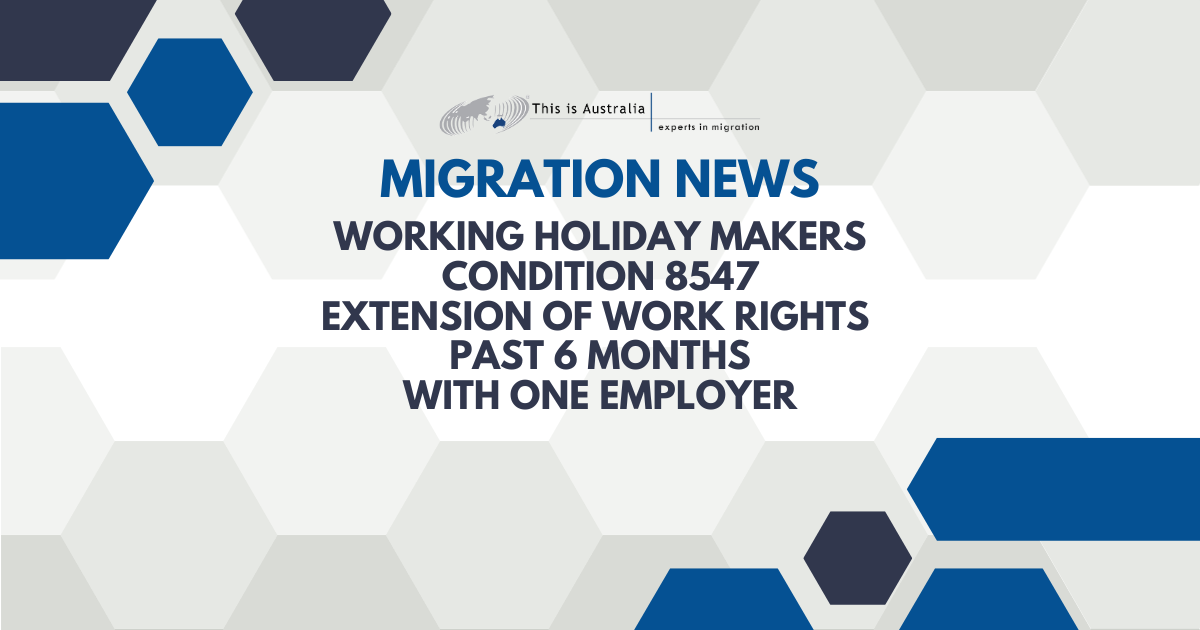
Working Holiday Makers – Condition 8547 – Extension of work rights past 6 months with one employer
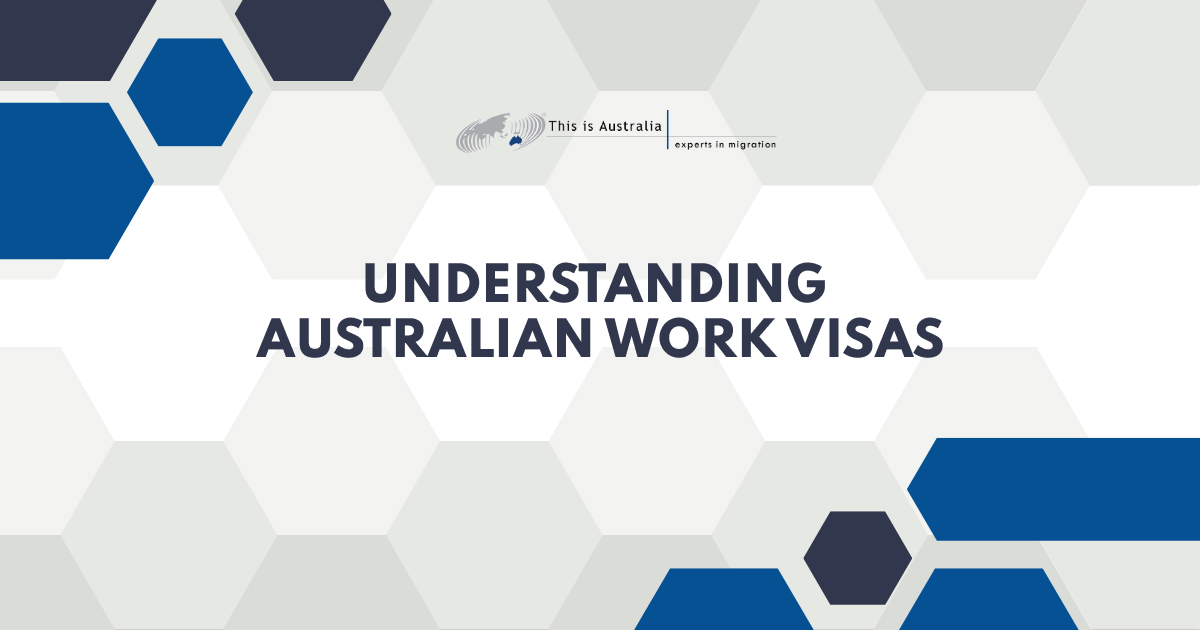
Understanding Australian Work Visas
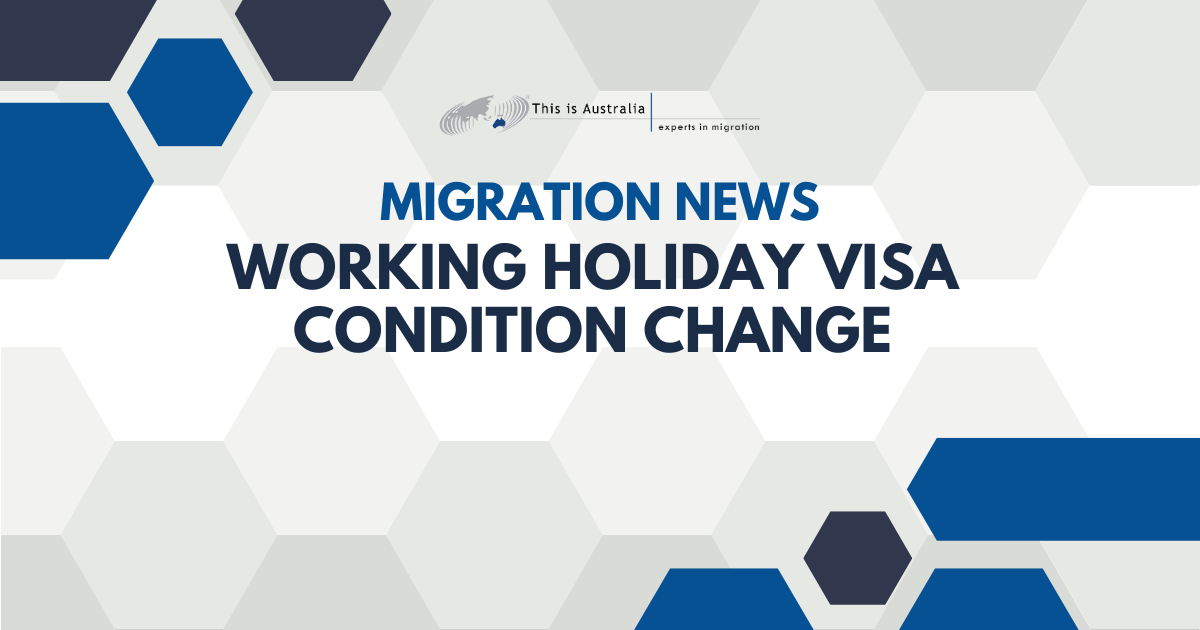
Working Holiday Visa Condition Changes
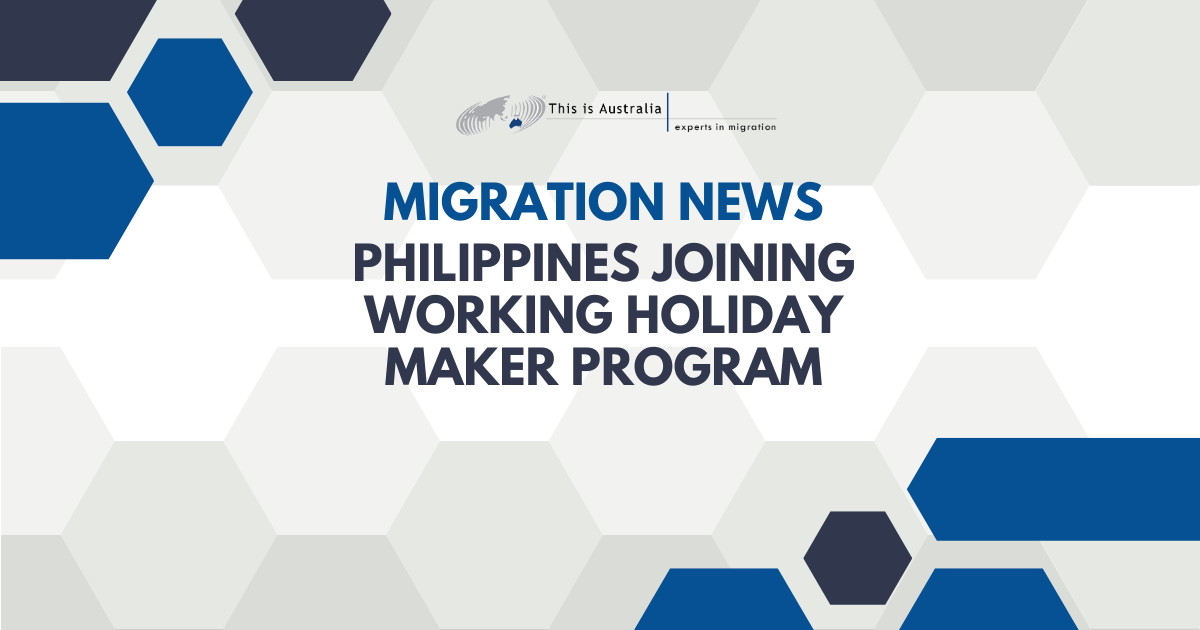
Philippines to be Added to Working Holiday Maker Program
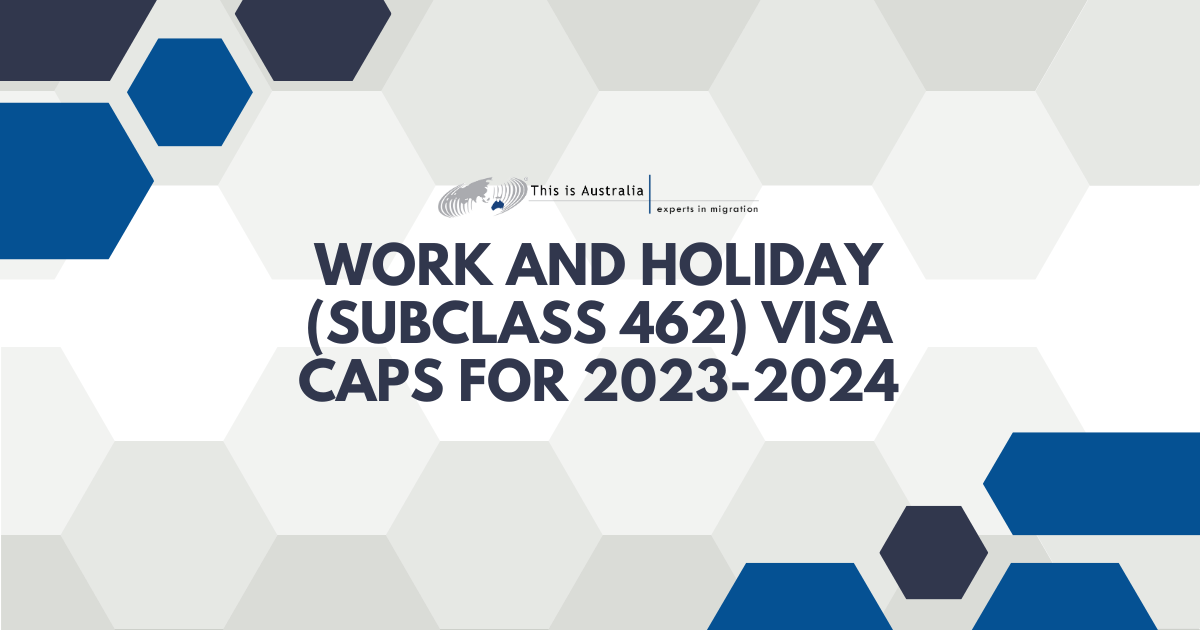
Work and Holiday (Subclass 462) Visa Caps for 2023-2024
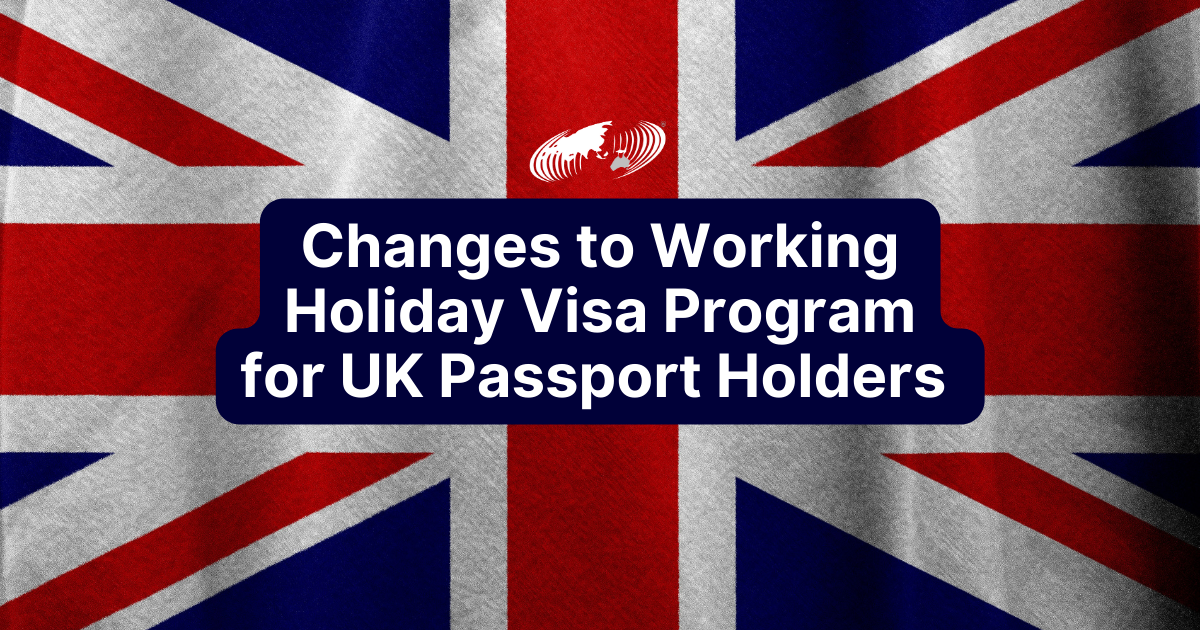
Changes to Australia’s Working Holiday Maker Program for UK Passport Holders

Australia Weighs Pros and Cons of Allowing Backpackers Over 35
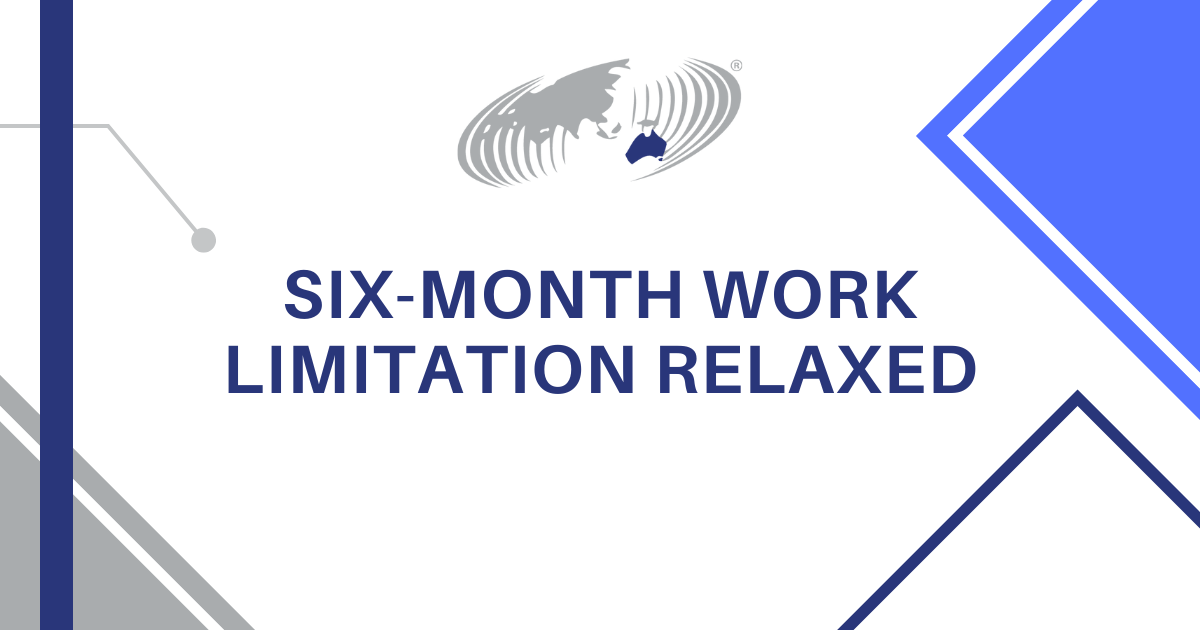
Six-Month Work Limitation Relaxed
Are you a skilled professional who wants to live and work in australia.
- +381 69 657 312
- +61 423 706 205
- 22. 05. 2018
How to convert Australian visitor visa to working visa?

You would like to come to work and live in Australia.
You think that the easiest way is to just come to Australia on a visitor visa and then convert it to a working visa.
Your friends told you “Everything is easier once you are there”. Well, for most it is not going to be that easy.
That may used to be a case, but lately it is getting harder and harder to get a working visa for Australia.
Extending your visitor visa
Once you hold a visitor visa, you cannot extend it or convert it into another type of visa, such as a working visa. If you want to extend your stay in Australia as a visitor, you need to apply for another visitor visa.
Many people can meet requirements only for Visitor visa Subclass 600.
If they apply for this type of visa while they are outside of Australia, visa application charge (VAC) is $140. However, once they come to Australia, if they want to apply for another visitor visa, VAC is $345. If they want to later apply for their third visitor visa, VAC is $1,045.
These are only costs for extending your stay while you hold a visitor visa and want to apply for extension (another visitor visas). With every application you need to show to have sufficient funds and that your intentions are only to stay temporarily in Australia. If you have a condition “No further stay” in your visitor visa, that means that you cannot apply for another visa.
Getting that working visa
If you can meet requirements for Working Holiday Visa Program, which is open only to passport holders of certain countries, in that case applying for a working (holiday) visa is usually going to be a smooth process.
This may even be the better strategy for eligible applicants to first come on a visitor visa and if or when they find a job, then apply for a working holiday visa (WHV) and then use their WHV by working from the first day.
However, most people who are interested to work in Australia do not meet eligibility criteria for WHV. For many, options are Skilled migration or Employer sponsored visas. Majority of people find student visas as an option which is often the most expensive choice.
Skilled Migration
To meet requirements for skilled migration, you need to reach a point to be issued an invitation to apply for a visa. Lately, the number of invitation has significantly decreased and currently you need to have 65 points to get an invitation.
Prior to putting your information online, on SkillSelect, you should have reached a certain score on English approved test, passed skills assessment, be of certain age, occupation etc.
Applicants for skilled migration may take months or even years to meet requirements, pass skills assessment and/or achieve required score on English tests. That means that they may be away from their home and family for a very long time. Therefore, we often advise our clients who are outside of Australia that if they meet requirements for skilled migration or need to work more on their eligibility, to rather work on it while they are outside Australia.
You can find more information about skilled migration working visa on our article which is here
Employer Sponsored Visas
The Employer sponsored working visa is an option for Australian employers who cannot find a suitable Australian worker within Australia. There are employers who advertise that they are happy to sponsor an overseas worker and you can contact them directly. Please note that both the employer and the worker must meet the requirements for visa.
If you need assistance with visitor, working or any other visa type, please be free to contact us. Our best contact is [email protected] .
Vera Radisavljevic
Solicitor and Registered Migration Agent MARN 1681254
Disclamer: Your use of the above text or the receipt of any information from this article or website www.baxvel.com is not intended to create nor does it create a solicitor (migration agent) – client relationship between you and the writer (Vera Radisavljevic and/or Baxvel Pty Ltd) and it is not a legal/immigration advice.
Recent posts

Join your de facto partner in Australia – Find out how!
You can join your de facto partner in Australia by applying for a partner visa

Partner and Fiance Visa for Australia 2 Options – Same Goal
Partner and fiance visa for Australia are indeed 2 different visa options. But, they have

Apply for a Partner Visa Outside Australia Subclass 309/100
Offshore applicants who want to migrate to Australia based on their de facto relationship or

Visitor visas for Australia during COVID-19
Since the COVID-19 pandemic has been announced, one of the most frequently asked questions has

Work in Australia Temporarily during COVID-19
Work in Australia Temporarily during COVID-19 Temporary Activity visa subclass 408 for Australia allows you

Enter and Leave Australia during COVID-19 Pandemic
Shortly after the global pandemic caused by the virus COVID-19 was announced, Australia closed its

Talent visa for Australia – Only for the exceptional!
Talent visa for Australia is the best visa option for Australia, as it allows holders

Temporary Work Visa for Australia
As of March 18th 2018, 457 visa was officially canceled and new visa applications for 457

(Non) Working Visa for Australia
Are you ambitious and ready for new experiences? If you want to acquire professional development

Visa for Australia for Graduated Engineers
There is a graduate visa for Australia for those who have graduated in Australia, but

Health Insurance for Tourists in Australia
Medical services in Australia are extremely expensive and even harmless injury or pain can bring

The Launch of a New Global Talent Scheme for Australia!
Global Talent Scheme for Australia is a new visa program launched by the Australian Government
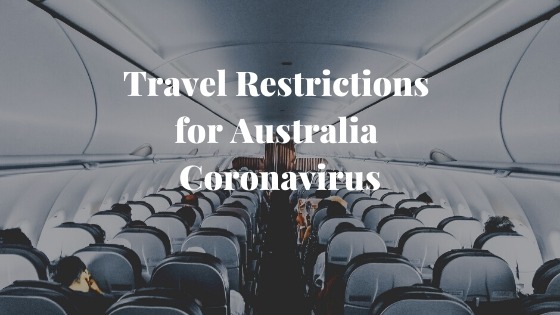
Travel Restrictions for Australia – Coronavirus
Covid19 is a subset of the virus corona that was transmitted from animals to humans

10 Reasons to Visit Australia
If you are planning a trip or want to change your place of living or

Priority to singles! New regional visas for Australia!
From 16 November 2019 the Migration Amendment 2019 amends the Migration Regulations from 1994 to

Australia welcomes workers through new visa programme
In order to attract migrants to areas outside the major cities of Australia, the Australian

Why should you study in Australia?
There are great advantages of studying in Australia and having a student visa for Australia.

Study IT in Australia
If you are after highly focused and relevant in-demand IT training and certification preparation for

New Option for Skilled Migration Visa for Western Australia
New Option for Skilled Migration Visa for Western Australia New Graduate Stream of Skilled Migration

Courses in Australia on Special Offer!
Now is the right time to undertake some of the available courses in Australia, because

First time in Serbia – Registered Migration Agent for Australia
Baxvel Pty Ltd has recently introduced some novelties that we would like to share with

What is a visa assessment for Australia?
If you would like an immigration advice about the procedure and your options for any

Requirements for Australian Student Visa
Studying abroad changes people’s lives forever and has a big impact on their future professional

How to apply and how long does it take to get visitor visa for Australia?
The application process for visitor visa depends on the type of visa you want to

English and other courses on special! $145/week only!
If you are considering to enrol into an English course or any other course in

You would like to come to work and live in Australia. You think that the

Australian Visitor Visa – Visa Costs and Required Funds
It is a million dollar question – How much money do you need to have

Partner Visa for Australia based on de facto relationship
To be eligible for Australian partner visa you must be married or in a de

Visitor Visa Options and Requirements
If you would like to come to Australia to visit family, friends, to do some

Australian Visa for the Commonwealth Games 2018
The 2018 Commonwealth Games, officially known as the XXI Commonwealth Games, will be held on

How to get a working visa for Australia
To be able to get a job in Australia you firstly need to have a

Tourist Visa for Australia Subclass 600
You are planning to come to Australia for holidays, sightseeing, to visit friends or relatives,

How can one get a permanent visa for Australia?
It is such a simple question, but yet the answer is not easy and not

Having work experience, but no qualifications? Do not worry!
You would like to get a permanent residency visa for Australia based on your qualifications and/or
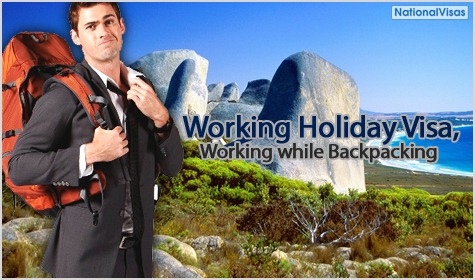
Good news for Working Holiday Makers
Working Holiday Visa and Work and Holiday Visa are temporary visas for young people at least 18 not
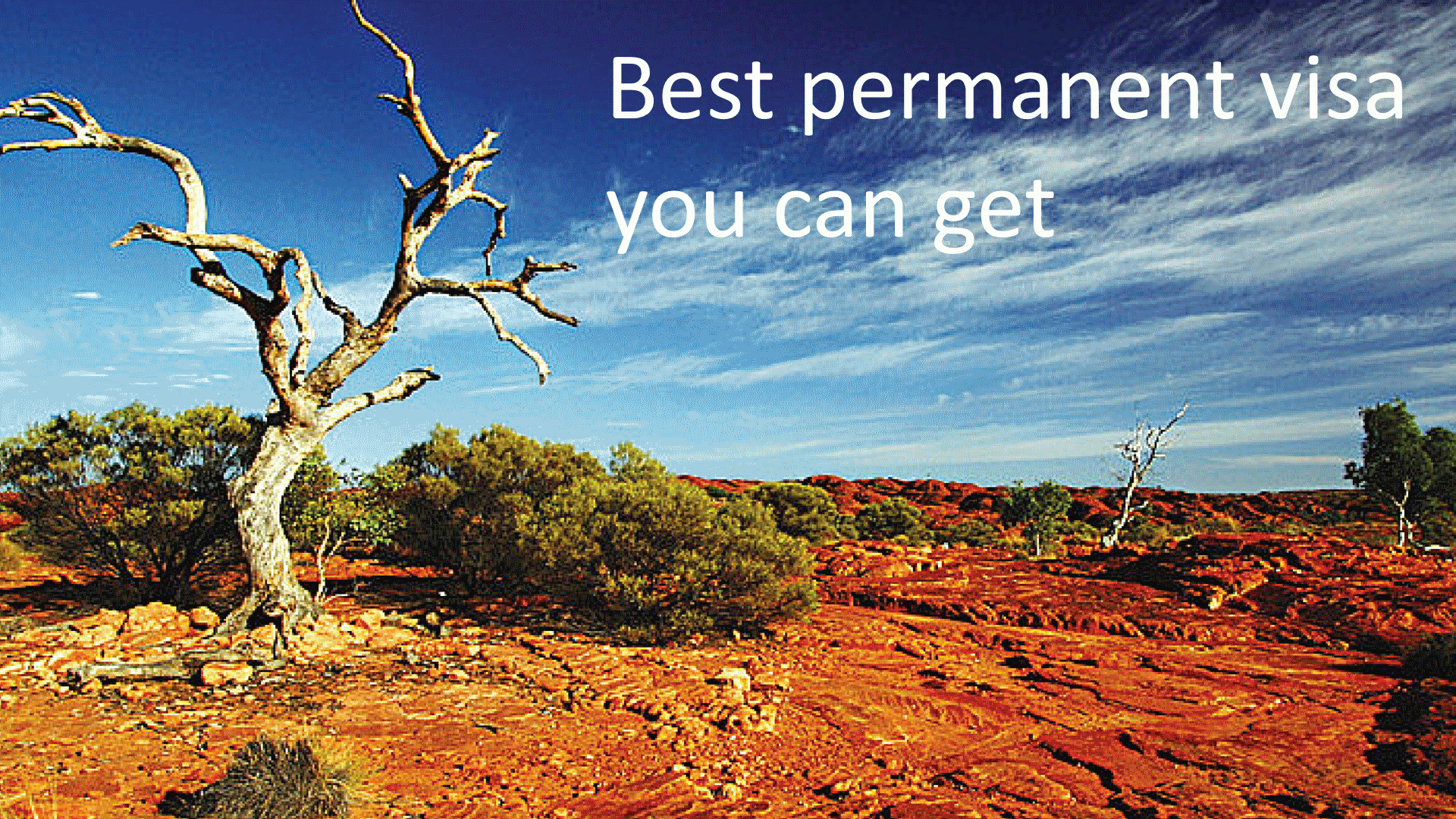
What is the best visa to get if you want to migrate to Australia?
The answer is definitely – Skilled Independent Visa 189. If you are granted Skilled Independent

New Year’s Celebration in Australia sounds good? Hurry up with your visa application!
If you would like to spend New Year’s Eve in Australia, then hurry up with
Baxvel provides immigration assistance for all types of visas for Australia.
» Code of Conduct » Consumer Guide
- baxvelaustralia
- [email protected]
RECENT POSTS
Useful pages.
- Department of Home Affairs
- Australian embassies and consulates
- Office of the Migration Agents Registration Authority
- Study In Australia
- SEEK jobs in Australia
© Copyright - BAXVEL | All rights reserved | Web design: Urban Dizajn

Australia Recommends 2024

Come and Say G'day

G'day, the short film

Discover your Australia

Travel videos

Deals and offers

Australian Capital Territory

New South Wales

Northern Territory

South Australia

Western Australia

External Territories

The Whitsundays

Mornington Peninsula

Port Douglas

Ningaloo Reef

Airlie Beach

Kangaroo Island

Rottnest Island

Hamilton Island

Lord Howe Island

Tiwi Islands

Phillip Island

Bruny Island

Margaret River

Barossa Valley

The Grampians

Hunter Valley

Yarra Valley

McLaren Vale

Glass House Mountains

Alice Springs

Uluru and Kata Tjuta

The Kimberley

Flinders Ranges

Kakadu National Park

Eyre Peninsula

Karijini National Park

Great Barrier Reef

Blue Mountains

Daintree Rainforest

Great Ocean Road

Purnululu National Park

Cradle Mountain-Lake St Clair National Park

Litchfield National Park

Aboriginal experiences

Arts and culture

Festivals and events

Food and drink

Adventure and sports

Walks and hikes

Road trips and drives

Beaches and islands

Nature and national parks

Eco-friendly travel

Health and wellness

Family travel

Family destinations

Family road trips

Backpacking

Work and holiday

Beginner's guide

Accessible travel

Planning tips

Trip planner

Australian budget guide

Itinerary planner

Find a travel agent

Find accommodation

Find transport

Visitor information centres
Deals and travel packages

Visa and entry requirements FAQ

Customs and biosecurity

Working Holiday Maker visas

Facts about Australia

Experiences that will make you feel like an Aussie

People and culture

Health and safety FAQ

Cities, states & territories

Iconic places and attractions

When is the best time to visit Australia?

Seasonal travel

Events and festivals

School holidays

Public holidays
How to get to Australia's most iconic cities

How long do I need for my trip to Australia?

How to travel around Australia

Guide to driving in Australia

How to hire a car or campervan

How to plan a family road trip

How to plan an outback road trip

- Australian visa information
- Working holiday visas

Sydney Airport, New South Wales © Sydney Airport
Australian Visa and Entry Requirements FAQs
Learn about visa requirements for entry to Australia for tourism purposes with this list of frequently asked questions.
Please note this page is intended to provide general information only and does not constitute legal advice. Tourism Australia is not the Australian government visa granting authority. For information on visas to enter Australia, visitors should seek the most up-to-date information from Australian Government Department of Home Affairs .*
Ready to plan your trip? We're ready to welcome you! Here are some helpful tips for getting your visa sorted:
- Be sure to secure the appropriate visa before travelling to Australia. Use the Visa Finder to explore your options.
- Ensure all details are correct and provide all required documents when you apply. An incomplete or incorrect application can delay your visa.
- Submitting multiple applications at the same time can slow the process. For visitor visas, submit one application per person, including children.
- Questions? The Australian Government's Global Service Centre can help.
Australian Visa Information
Unless you are an Australian citizen, you will need a valid Australian visa to enter the country. New Zealand passport holders can apply for a visa upon arrival in the country. All other passport holders, regardless of age, must apply for a visa before leaving home. You can apply for a range of Australian visa types, including tourist visas and working holiday visas, via the ETA app or on the Department of Home Affairs website.
There are different Australian visa types available for travellers to Australia. Knowing which Australian visa to apply for depends on the length of your stay, your passport and the purpose of your visit. You’ll also need to meet certain financial and medical requirements, be outside of Australia when applying and maintain health insurance for the duration of your stay.
Electronic Travel Authority visa (subclass 601) This visa allows you to visit Australia as many times as you want, for up to a year, and stay for three months each visit. This visa is available to passport holders from a number of countries and regions, who live outside Australia. A step-by-step guide on how to apply is here .
All ETA-eligible passport holders must apply for an ETA using the Australian ETA app. Agents can assist you in the application process, but you must be physically present as a live facial image is required.
eVisitor (subclass 651) This is a free visa for multiple visits to Australia for tourism or business purposes for up to three months at a time within a 12-month period. This visa is available to passport holders from a number of European countries and it cannot be extended.
Visitor visa (subclass 600) The Visitor visa allows you to visit Australia, either for tourism or business purposes. It is open to all nationalities. Generally, a period of stay of up to three months is granted, but up to 12 months may be granted in certain circumstances. Applicants will have to pay a fee to submit their application.
The application process may differ depending on which visa you need.
You can only apply for the Electronic Travel Authority visa (subclass 601) through the Australian ETA app. A step-by-step guide on how to apply is located here .
For other visas, you can apply online by creating an ImmiAccount and completing the application process. Be sure to submit your application well in advance of your travel date to allow enough time for processing. You may be asked to provide further supporting information. You will be notified in writing if your tourist visa is approved and it will be digitally linked to your passport. For more information on different visa types, and Australian visa requirements including how to apply for an Australian visa, visit the Department of Home Affairs website.
If you are already in Australia and hold a valid Electronic Travel Authority visa (subclass 601) you can extend your stay by applying for another visa, such as a Visitor visa (subclass 600). An eVisitor (subclass 651) cannot be extended.
See the Department of Home Affairs website for details.
Working Holiday Visas
Australia's Working Holiday Maker program allows visitors aged under 30 (or 35 in certain cases) who hold a passport from a participating country to travel and work in Australia. Working holiday visas are valid for one year, or up to three years if you meet certain conditions.
Find out more about working holiday visas here .
*Australian visa regulations (including visa application charges) change from time to time. The information provided here is valid at the time of publication, but visitors should check this information is still current by visiting the Australian Department of Home Affairs .
More articles like this
We use cookies on this site to enhance your user experience. Find out more . By clicking any link on this page you are giving your consent for us to set cookies.
Acknowledgement of Country

We acknowledge the Traditional Aboriginal and Torres Strait Islander Owners of the land, sea and waters of the Australian continent, and recognise their custodianship of culture and Country for over 60,000 years.
- International (English)
- New Zealand (English)
- Canada (English)
- United Kingdom (English)
- India (English)
- Malaysia (English)
- Singapore (English)
- Indonesia (Bahasa Indonesia)
- Deutschland (Deutsch)
- France (Français)
- Italia (Italiano)
- 中国大陆 (简体中文)
*Product Disclaimer: Tourism Australia is not the owner, operator, advertiser or promoter of the listed products and services. Information on listed products and services, including Covid-safe accreditations, are provided by the third-party operator on their website or as published on Australian Tourism Data Warehouse where applicable. Rates are indicative based on the minimum and maximum available prices of products and services. Please visit the operator’s website for further information. All prices quoted are in Australian dollars (AUD). Tourism Australia makes no representations whatsoever about any other websites which you may access through its websites such as australia.com. Some websites which are linked to the Tourism Australia website are independent from Tourism Australia and are not under the control of Tourism Australia. Tourism Australia does not endorse or accept any responsibility for the use of websites which are owned or operated by third parties and makes no representation or warranty in relation to the standard, class or fitness for purpose of any services, nor does it endorse or in any respect warrant any products or services by virtue of any information, material or content linked from or to this site.

10 Things To Know About Visas & Being A Digital Nomad In Japan
- Japan does not currently have a Digital Nomad Visa, but it's worth staying updated as policies may change in the future.
- American and Canadian tourists can stay in Japan for up to 90 days without a visa, but they are not allowed to work during this period.
- Japan offers specific visas for highly skilled professionals, engineers, business managers, investors/business owners, and students, each with their own eligibility criteria and benefits.
The digital nomad economy is a dynamic and rapidly growing sector that has gained significant momentum in recent years. More than a trend, it represents a shift in work culture, and countries have perceived becoming a desired destination among digital nomads can boost the economy.
Therefore, some countries have created the Digital Nomad Visa category , which is becoming quite popular as it allows people to experience life in different countries. Asia is a favorite destination for digital nomads, but travelers should know more about this visa category before booking tickets.
When it comes to Asia, Japan is one of the most exciting destinations. This tech country is famous for its history, beautiful Japanese islands , cherry trees, and hidden gems like Himeji . But does Japan have a Digital Nomad Visa?
RELATED: Remote Work Essentials: The 10 Best VPN Services For Digital Nomads In 2023
What Is A Digital Nomad Visa?
A digital nomad visa is a specialized type of Visa designed to accommodate individuals who work remotely while traveling. It allows them to legally reside in a foreign country for an extended period, ranging from a few months to a year or more. This Visa acknowledges the evolving nature of work, where individuals can perform their jobs online, independent of a fixed location.
It provides a legal framework for digital nomads, offering them stability, access to essential services, and the ability to contribute to the local economy. Countries implementing such visas aim to attract a community of global professionals and creatives.
Japan Doesn't Have A Digital Nomad Visa
Japan had not yet established a dedicated visa category tailored to digital nomads. Unlike certain countries that have embraced this trend with specialized "Digital Nomad Visas," Japan's existing visa options are primarily designed for workers, students, and entrepreneurs with specific job offers or educational pursuits.
While digital nomads can work within Japan's existing visa framework, it does not cater explicitly to their unique lifestyle. However, it's advisable to stay updated with official immigration sources, as policies may evolve, and Japan might introduce a specific nomad visa.
Many countries in Asia offer Digital Nomad Visas, including Thailand, Malaysia, and Indonesia.
Tourists Are Allowed To Stay Up To Three Months In Japan
American and Canadian citizens do not need a tourist visa to enter Japan for short stays. They are allowed to stay for up to 90 days under the visa waiver program. This enables tourists to explore Japan's rich culture (such as Tokyo's Instagram-worthy sports to take a picture ), cuisine, attractions and visit without the need for additional paperwork.
However, it's essential to adhere to immigration regulations and ensure proper documentation is carried out during the stay.
To enter Japan as a tourist , American citizens must have a valid passport and a return ticket. Travelers aren't allowed to work during this period.
Working Holiday Visa
The Working Holiday Visa is a type of Visa that allows young individuals (usually between 18 and 30) from certain countries to live and work in Japan for up to one year.
This Visa promotes cultural exchange and allows young people to experience life in Japan while supporting themselves through temporary part-time work. The countries involved in Working Holiday Visa agreements vary depending on each nation's bilateral agreements.
Currently, Japan has an agreement with 26 countries for the Working Holiday Visa, including Canada, the United Kingdom, and Australia.
Highly Skilled Professional (HSP) Visa
The Highly Skilled Professional (HSP) Visa is a specialized visa category in Japan designed to attract foreign professionals with advanced skills and expertise. This Visa is granted to individuals with high levels of knowledge and experience in their respective fields, such as academia, research, business management, or specialized technical roles.
It offers certain benefits, including preferential immigration treatment, fast-track processing, and extended periods of stay. The HSP Visa aims to bolster Japan's global competitiveness by encouraging the influx of highly skilled talent.
Eligibility criteria are stringent, requiring a minimum 70 score based on factors like academic background, salary, and professional experience.
The Engineering Visa
The Engineering Visa in Japan , officially known as the "Engineer/Specialist in Humanities/International Services" visa, is designed for foreign professionals in technical or specialized fields. It caters to engineers, IT specialists, designers, and researchers.
This visa category enables individuals to work in Japan for an extended period, provided they meet the specific eligibility criteria. It's a crucial component of Japan's efforts to attract and retain skilled foreign talent, contributing to the nation's technological advancement and global competitiveness.
Holders of this Visa can engage in their specialized roles, aiding various industries in Japan's dynamic economy.
RELATED: These Caribbean Hotspots Are Great For Digital Nomads
Business Manager Visa In Japan
The Business Manager Visa in Japan is designed for individuals involved in managing or operating a business in the country. This category encompasses various roles, from entrepreneurs starting their ventures to individuals appointed by existing companies to manage their Japanese operations.
This Visa is crucial in promoting foreign investment and entrepreneurship in Japan. It allows holders to engage in business activities, contribute to the local economy, and foster international collaboration.
Eligibility criteria for this Visa are stringent, requiring a clear business plan and financial stability.
Investor/Business Owner Visa
The Investor/Business Owner Visa in Japan is a particular category designed to encourage foreign investment and entrepreneurship. It allows individuals who plan to establish or own a business in Japan to reside and work there.
This Visa supports economic growth and innovation by attracting foreign capital and expertise. This visa category plays a vital role in Japan's efforts to foster a business-friendly environment, promote innovation, and enhance its position in the global economy. Holders contribute significantly to the local economy and job market.
To qualify, applicants must meet specific financial criteria and demonstrate the viability of their business plans.
Student Visa
Student visas for Americans and Canadians in Japan offer international education and cultural exchange opportunities. These visas allow students to enroll in accredited Japanese educational institutions, including universities, language schools, and vocational programs.
They enable individuals to immerse themselves in Japan's rich culture, learn the language, and gain a global perspective.
The application process typically involves securing admission to an institution, proving financial stability, and meeting health and character requirements. Student visa holders can work part-time during their studies and explore Japan's diverse landscapes and traditions.
It's a transformative experience that fosters personal and academic growth while building international connections.
- The student Visa can last between six months and two years from the date of entry
- Some students are allowed to work 28 hours per week
RELATED: 10 Things To Know About A Digital Nomad Visa In Spain
Other Asian Countries That Offer Digital Nomad Visas
Japan is planning to attract digital nomads by creating a special visa in the future. While they don't release their new visa category, travelers can still check other countries in Asia that already have recognized the potential of digital nomads and have taken steps to attract them through specialized visa programs.
For instance, Indonesia has introduced a "Temporary Stay Visa," specifically catering to remote workers. This allows them to reside in the country while continuing their work.
Thailand, a popular destination for travelers, has incorporated a category for digital nomads under their "Smart Visa" program. This initiative aims to accommodate individuals whose work is location-independent, contributing to the country's economy.

Options For Traveling To Australia After Your Visa Expired
- Last updated Apr 13, 2024
- Difficulty Intemediate
- Category Travel
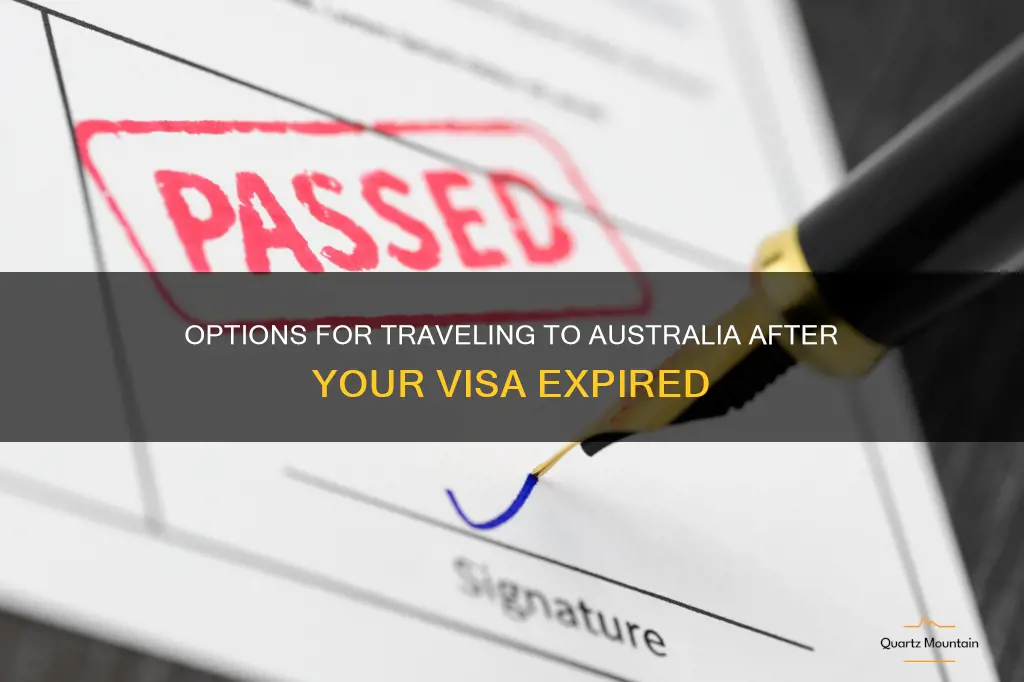
Have you ever wondered what options you have for traveling to Australia after your visa has expired? Whether you're seeking adventure or looking to extend your stay, there are still ways to make your dreams of exploring the land Down Under a reality. From applying for a new visa to exploring alternative routes, this article will guide you through the various options available to continue your Australian adventure even after your visa has expired. So, grab your suitcases and get ready for an exciting journey as we explore the possibilities of traveling to Australia after your visa has expired.
What You'll Learn
Understanding the visa expiration process in australia, exploring options to extend or renew your visa, exploring alternative visa options, seeking assistance from immigration lawyers or agents.

A visa is a crucial document that allows foreign nationals to visit or stay in Australia for a specified period. However, it is essential to understand the visa expiration process and the consequences of overstaying a visa in Australia.
The consequences of overstaying a visa in Australia:
Overstaying your visa can have severe ramifications on your immigration status in Australia. If you remain in the country without a valid visa, you become an unlawful non-citizen, which can have numerous negative consequences. Some of the key consequences of overstaying your visa in Australia are:
- Detention and deportation: Overstaying your visa can result in detention by the Australian Border Force (ABF) and subsequent deportation. The ABF has the authority to detain and remove individuals who have overstayed their visas, which can be a distressing and disruptive experience.
- Inability to work or study: Once your visa has expired, you are no longer authorized to work or study in Australia. This can have significant implications for your career or educational goals, as employers and educational institutions require valid visa details.
- Ineligibility for future visas: Overstaying your visa can have long-term consequences, as it can impact your eligibility for future visas. Immigration authorities may view your previous breach of visa conditions as a negative factor when considering future visa applications.
- Ban on re-entry: Overstaying a visa can result in a ban on re-entry to Australia. The length of the ban depends on the duration of your overstay and the circumstances of your case. A ban can range from 3 years to a permanent ban, effectively preventing you from returning to Australia in the future.
The grace period after visa expiration:
After your visa has expired, there is generally no grace period or leniency provided by the Australian immigration authorities. Once your visa reaches its expiration date, you are expected to leave the country promptly. Failure to do so can lead to the aforementioned consequences.
It is crucial to be aware of your visa's expiration date and plan your departure accordingly. Leaving Australia before your visa expires ensures that you maintain lawful status and avoids any potential penalties or implications associated with overstaying.
Penalties and repercussions for overstaying in Australia:
The penalties for overstaying vary depending on the individual circumstances and the length of the overstay. The Department of Home Affairs takes visa breaches seriously, and the severity of penalties reflects this approach. Some common penalties and repercussions for overstaying in Australia are:
- Detention: The ABF may detain individuals who have overstayed their visas. Detention can occur while the immigration authorities process your removal from Australia.
- Deportation and removal costs: If detained, you may be subject to deportation. In such cases, the Australian government can charge you for the costs associated with your removal, including transportation expenses.
- Visa cancellation: Overstaying a visa can lead to cancellation of your current visa. This can have significant implications for any future visa applications, as previous visa cancellations can be taken into account during the assessment process.
- Ban on re-entry: As mentioned earlier, overstaying your visa can result in a ban on re-entry to Australia. The length of the ban depends on various factors, such as the duration of your overstay and the circumstances of your case.
To avoid the penalties and repercussions of overstaying a visa, it is crucial to understand and abide by the conditions of your visa. If you need to extend your stay in Australia, it is advisable to apply for a visa extension or explore other suitable visa options before your current visa expires.
In conclusion, overstaying a visa in Australia can have severe consequences, including detention, deportation, ineligibility for future visas, and bans on re-entry. It is vital to be aware of your visa's expiration date and plan your departure accordingly. If you need to extend your stay, it is advisable to seek proper guidance and consult with the relevant authorities to ensure you maintain lawful status in the country.
Exploring Puerto Rico: Travel Tips for F1 Visa Holders
You may want to see also
Contacting the Department of Home Affairs:
- When your visa is close to expiring, it is crucial to get in touch with the Department of Home Affairs as soon as possible.
- You can contact them via phone, email, or in person at one of their offices. It is advisable to have all necessary documents ready before contacting them.
- The department will guide you through the process of extending or renewing your visa. They will provide you with an application form and a list of required documents.
- It is important to adhere to the deadlines provided by the department and submit all the required documents accurately.
- Be prepared for potential delays in processing times and ensure to follow up on your application regularly.
Applying for a new visa:
- If your current visa is not eligible for extension or renewal, you may need to apply for a new visa.
- Start by researching suitable visa options based on your circumstances. The Department of Home Affairs website is a great resource for this.
- Once you have identified the visa that best suits your situation, gather all the necessary documents required for the application. Ensure that you meet the eligibility criteria.
- Follow the instructions provided by the Department of Home Affairs for visa application submission. This may include submitting the application online or in person.
- Pay close attention to the visa application fees and make sure to submit the correct payment along with your application.
- Be prepared for possible health and character checks, as these are often part of the visa application process.
- Keep a record of your application details, including any reference numbers or receipts. This will help you track the progress of your application.
Seeking sponsorship or employer sponsorship:
- Another option to explore is seeking sponsorship or employer sponsorship from an Australian employer.
- Start by conducting thorough research and identifying industries or companies that may be open to sponsoring employees.
- Update your resume and tailor it to highlight your relevant skills and experience. This will make you more attractive to potential employers.
- Network with people in your industry and attend job fairs or networking events. Building connections can increase your chances of finding sponsorship opportunities.
- Apply for jobs that offer sponsorship or explicitly mention that they are open to sponsoring foreign employees.
- If you secure a job offer, discuss the possibility of employer sponsorship with your prospective employer.
- If your employer agrees to sponsor you, follow the guidelines and requirements set by the Department of Home Affairs for employer-sponsored visas.
- Keep track of any visa application dates and deadlines and submit all required documents accurately and on time.
In summary, exploring your options to extend or renew your visa involves contacting the Department of Home Affairs, applying for a new visa, or seeking sponsorship or employer sponsorship. It is crucial to follow all instructions provided by the department and ensure that all required documents are submitted accurately and on time. Stay proactive throughout the process and be prepared for potential delays or additional requirements. Good luck!
Understanding the Visa Requirements for Traveling to Norway
When it comes to exploring alternative visa options, there are several paths you can consider depending on your situation and goals. Whether you want to travel and work abroad, pursue further studies, or establish a long-term career in a different country, there are visa options available that can help you achieve your objectives. In this article, we will delve into three popular alternative visa options: working holiday visas, student visas, and sponsored visas or skilled migration.
Working Holiday Visas:
Working holiday visas are an excellent option for young individuals who want to experience living and working in a foreign country while exploring new cultures and gaining international work experience. These visas allow you to work part-time or full-time for a limited period, typically between 6 months to 2 years, depending on the country. They are usually available to citizens of specific countries with bilateral agreements in place.
To apply for a working holiday visa, you will generally need to meet specific criteria, such as being between the ages of 18 and 30 or 35, having sufficient funds to support yourself during your stay, and having health insurance. It's also important to note that each country may have different requirements and limitations, so it's vital to research and understand the specific conditions of the working holiday visa you are interested in.
Student Visas:
If your primary goal is to pursue further studies, obtaining a student visa can provide you with the opportunity to both study and work in another country. Student visas often allow part-time work during the academic year and full-time work during scheduled breaks or vacations.
To apply for a student visa, you will typically need to submit proof of acceptance into a recognized educational institution, evidence of sufficient funds to cover tuition fees and living expenses, and a valid passport. Additionally, some countries may require you to provide additional documents such as medical examinations or language proficiency test results.
Sponsored Visas or Skilled Migration:
If you have specialized skills or qualifications, another attractive alternative visa option is to apply for a sponsored visa or skilled migration program. These visas are often designed to fill specific skill shortages in a country's workforce, and they usually offer more long-term residency opportunities compared to working holiday visas or student visas.
To be eligible for a sponsored visa or skilled migration program, you will generally need to meet certain criteria that may include having a job offer from a qualified employer, meeting specific education and skill requirements, and often evidence of language proficiency. Each country has its own list of eligible occupations and application process, so you must thoroughly research and understand the requirements of your desired destination.
When exploring alternative visa options, it's crucial to carefully consider your goals, circumstances, and the specific requirements of the visa options available. It is also advisable to consult with immigration experts or seek guidance from official government sources to ensure that you have accurate and up-to-date information regarding your visa application. With the right visa, you can embark on a new adventure, gain valuable experiences, and potentially create a pathway to a successful international career.
Exploring Boundaries: Unlocking the Possibilities of Travel with a Schengen Visa
Consulting with an immigration lawyer is an important first step for many individuals. Immigration lawyers are professionals who specialize in immigration law and can provide invaluable advice and guidance throughout the visa application process. Here are some key reasons why consulting with an immigration lawyer is beneficial:
- Expert Legal Advice: Immigration lawyers are well-versed in immigration law and are up-to-date with the latest legal developments. They can provide accurate and reliable advice tailored to your specific circumstances. Whether you have a straightforward case or a complex situation, an immigration lawyer can analyze your case and provide guidance on the best course of action.
- Application Assistance: Filling out visa applications can be confusing and time-consuming. Immigration lawyers can help you navigate through the application process, ensuring that all documents are correctly submitted and that you meet all the requirements. They can also help you prepare for any interviews or hearings that may be required.
- Problem-solving: If you encounter any issues or complications during the immigration process, an immigration lawyer can help identify the problem and find a solution. They can represent you in negotiations with immigration authorities and provide the necessary legal arguments to support your case.
Engaging the services of a registered migration agent is another option for individuals seeking assistance with immigration matters. Registered migration agents are professionals who are authorized to provide immigration advice and assistance. Here are some reasons why engaging a registered migration agent can be beneficial:
- Knowledge and Experience: Registered migration agents have completed extensive training and are registered with the appropriate regulatory body. They have a deep understanding of immigration law and the application processes. They can provide reliable advice and assist you in preparing and lodging your visa application.
- Compliance with Regulations: Immigration laws are constantly changing, and it can be challenging to keep up with the latest requirements. Registered migration agents stay informed about any changes to the immigration regulations and can ensure that your application is fully compliant.
- Representation: Registered migration agents can represent you in dealings with immigration authorities. They can communicate with immigration officers on your behalf and handle any inquiries or requests for further information. This can save you time and effort and ensure that your case is presented in the best possible light.
Understanding the legal processes and requirements involved in immigration is crucial for success. Immigration lawyers and registered migration agents can provide you with the knowledge and guidance needed to navigate through the complex immigration system. They can ensure that you meet all the necessary requirements and increase your chances of a successful outcome. Remember to choose a reputable professional with experience in immigration law to ensure the best possible outcome for your case.
Traveling with an R-1 Visa: Can I Travel with an I-485 Pending?
Frequently asked questions.
If your visa has expired, you will need to apply for a new visa in order to travel to Australia legally. You can do this by submitting a new visa application through the Department of Home Affairs website. Make sure to check the specific requirements and eligibility criteria for the visa you are applying for.
No, if your previous visa has expired, you cannot enter Australia on a tourist visa. It is important to have a valid visa before traveling to Australia. If your previous visa has expired, you will need to apply for a new visa before you can enter the country.
Traveling to Australia without a valid visa is illegal and can have serious consequences. If you are caught without a valid visa, you may be detained, deported, and banned from entering Australia for a certain period of time. It is always important to make sure you have a valid visa before traveling to any country.

- Guilia Velez Author

- Viajera Compulsiva Author Editor Reviewer
It is awesome. Thank you for your feedback!
We are sorry. Plesae let us know what went wrong?
We will update our content. Thank you for your feedback!
Leave a comment
Travel photos, related posts.
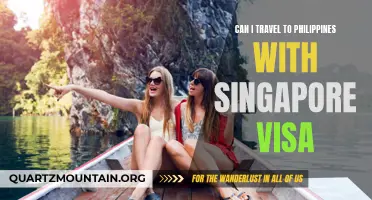
Exploring the Islands: Traveling to the Philippines with a Singapore Visa
- Mar 22, 2024
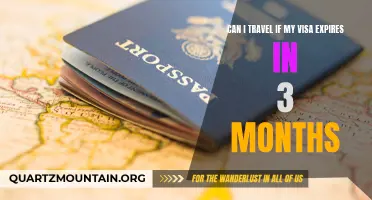
Can I Travel If My Visa Expires in 3 Months? What You Need to Know
- Mar 17, 2024
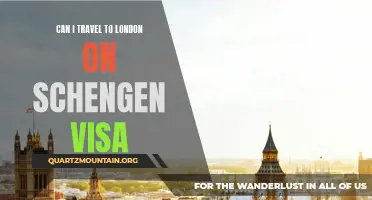
Exploring London on a Schengen Visa: A Guide for Travelers
- Mar 21, 2024
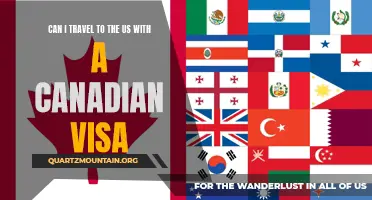
Traveling to the US with a Canadian Visa: What You Need to Know
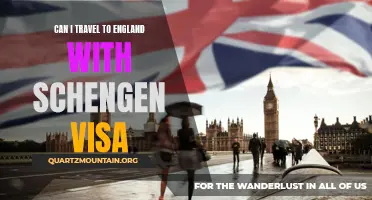
Traveling to England with a Schengen Visa: Everything You Need to Know
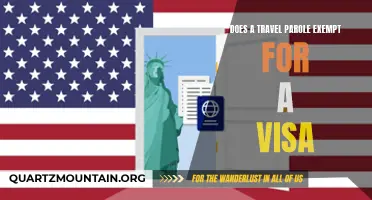
Understanding the Travel Parole: Exemptions and Visa Requirements
- Apr 09, 2024
- Travel Updates
New Zealand’s huge visa crackdown after ‘unsustainable’ influx
New Zealand has tightened its visa regulations in the face of “unsustainable” net migration levels in an effort to further protect jobs for its citizens.

Qantas reroutes major flight path
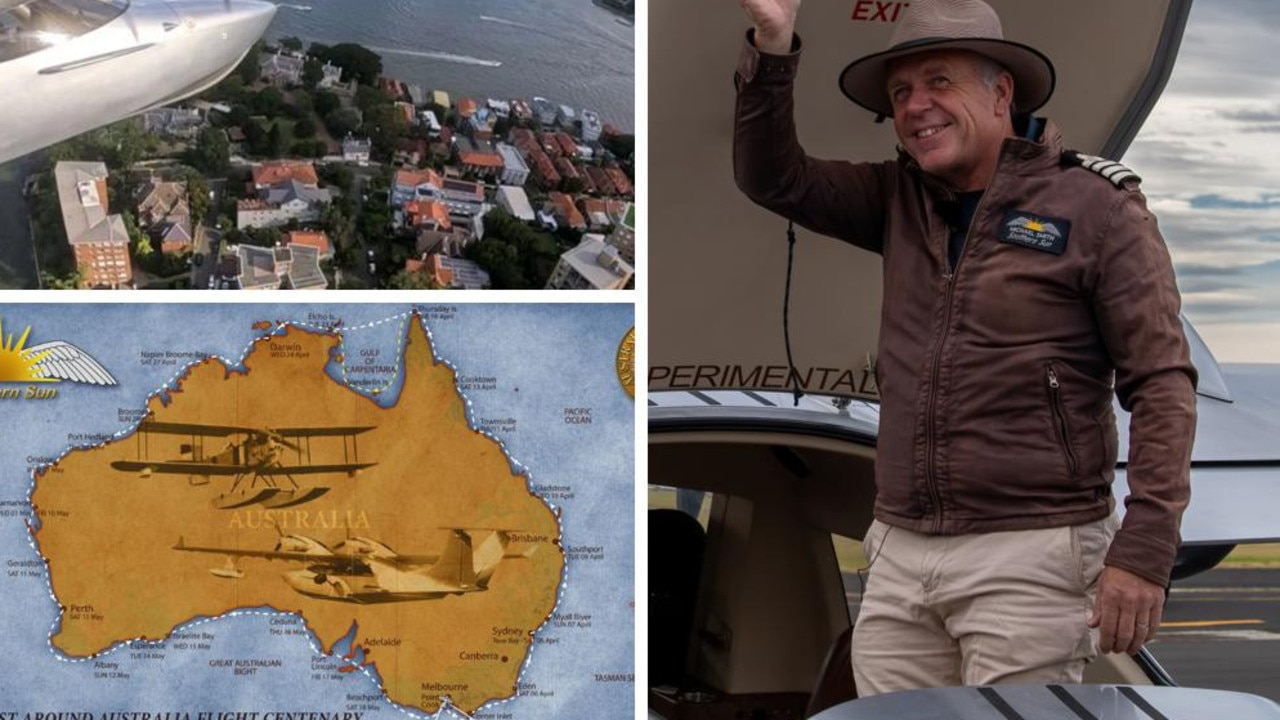
Wild map of pilot’s historic Aussie flight

Genius way stranded men created ‘help’ sign
New Zealand has tightened its visa regulations in the face of “unsustainable” net migration levels in an effort to further protect jobs for its citizens.
The nation of 5.1 million has made immediate changes to is Accredited Employer Worker Visa, introducing new language and skill criteria for potential migrants and shortening the duration of work permits.
Minister of Immigration Erica Stanford announced the changes on Monday, emphasising the need to prioritise New Zealanders for employment, particularly in sectors where skill shortages do not exist.
This comes in the wake of 173,000 non-New Zealand citizens migrating to the country in 2023.

The government insists on prioritising employment for New Zealanders in fields without shortages.
Key modifications to the AEWV scheme include the introduction of a minimum English language proficiency requirement, a new minimum skill requirement that can be met through relevant work experience or qualifications, and a reduction in the maximum continuous duration of an AEWV from previously longer periods to now just three years.

Employers are mandated to ensure that migrants meet these new requirements before hiring. This includes declaring that no suitable and available New Zealand citizen applied for the position and justifying why any local applicants were not selected.
Additionally, employers are required to advertise job vacancies for a minimum of 21 days to give New Zealanders ample opportunity to apply.
Certain job roles, particularly in the transport and care sectors, will be exempt from some of these new requirements, acknowledging the unique demands and shortages in these areas.
The change comes after Australia implemented changes in 2023 for New Zealanders moving across the ditch to Australia.
Under the new legislation, all Special Category Visa holders will be able to directly apply for citizenship without becoming permanent residents first – provided they meet four-year residence and other eligibility requirements.
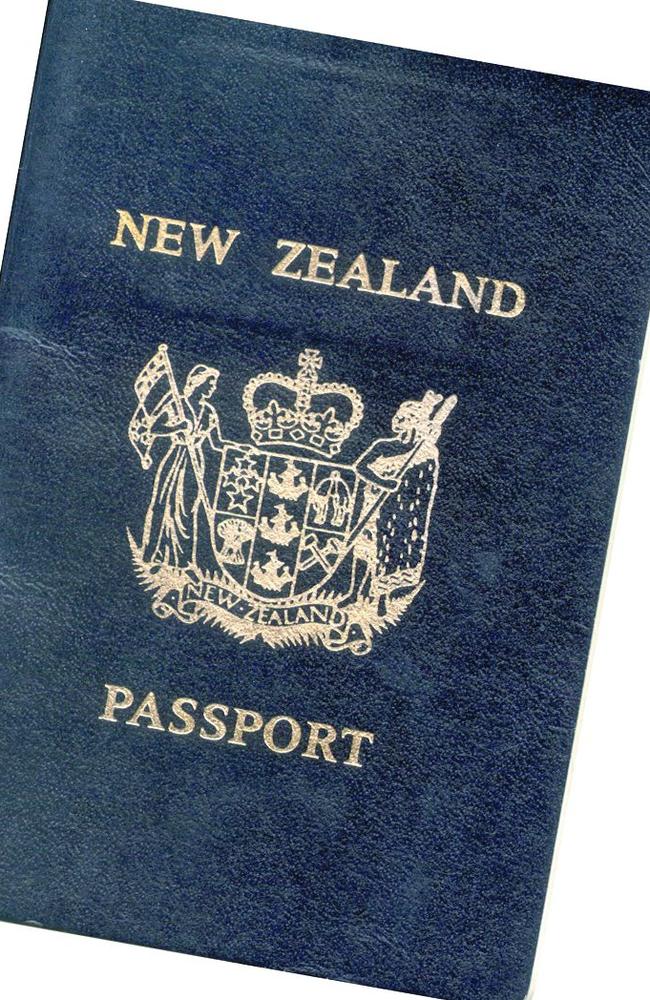
The changes will bring Australia’s treatment of New Zealanders in line with New Zealand’s treatment of Australians.
Prime Minister Anthony Albanese said the change would further strengthen the long friendship between the two countries.
“Australia and New Zealand have a deep friendship, which has been forged through our history, shared values, and common outlook,” he said.
“As we mark the 50th anniversary of the trans-Tasman Travel Arrangement, I look forward to strengthening our relationship.
“We know that many New Zealanders are here on a Special Category Visa while raising families, working and building their lives in Australia. So I am proud to offer the benefits that citizenship provides.”
Qantas has made a huge call on flights travelling a major route from Australia over fears of a potential Iranian attack as the conflict in the Gaza Strip escalates.
Australian adventurer Michael Smith has hit an important first milestone in his mammoth effort to recreate the first seaplane circumnavigation of the country a century ago.
Three stranded men have been rescued from a tiny Pacific island after crafting a “crucial” message on the sand.
Official websites use .gov A .gov website belongs to an official government organization in the United States.
Secure .gov websites use HTTPS A lock ( A locked padlock ) or https:// means you've safely connected to the .gov website. Share sensitive information only on official, secure websites.
- Create Account
USCIS Increases Automatic Extension of Certain Employment Authorization Documents to Improve Access to Work Permits
WASHINGTON — Building on extensive modernization efforts that have streamlined and improved access to work permits for eligible noncitizens, USCIS today announced a temporary final rule (TFR) to increase the automatic extension period for certain employment authorization documents (EADs) from up to 180 days to up to 540 days. This announcement follows improvements that have reduced processing times for EADs significantly over the past year.
The temporary measure announced today will prevent already work-authorized noncitizens from having their employment authorization and documentation lapse while waiting for USCIS to adjudicate their pending EAD renewal applications and better ensure continuity of operations for U.S. employers. This is the latest step by the Biden-Harris Administration to get work-authorized individuals into the workforce, supporting the economies where they live.
“Over the last year, the USCIS workforce reduced processing times for most EAD categories, supporting an overall goal to improve work access to eligible individuals. However, we also received a record number of employment authorization applications, impacting our renewal mechanisms,” said USCIS Director Ur M. Jaddou. “Temporarily lengthening the existing automatic extension up to 540 days will avoid lapses in employment authorizations. At the same time, this rule provides DHS with an additional window to consider long-term solutions by soliciting public comments, and identifying new strategies to ensure those noncitizens eligible for employment authorization can maintain that benefit.”
This TFR aligns with an ongoing effort at USCIS to support employment authorized individuals’ access to work. USCIS has reduced EAD processing times overall and streamlined adjudication processing, including:
- Reducing by half EAD processing times of individuals with pending green card applications from FY2021 to date,
- Processing a record number of EAD applications in the past year, outpacing prior years,
- Engaging with communities to educate work-eligible individuals who were not accessing the process and provide on-the-ground intake support of applications,
- Reducing processing time for EADs for asylum applicants and certain parolees to less than or equal to 30-day median,
- Extending EAD validity period for certain categories from 2 years to 5 years,
- Streamlining the process for refugee EADs, and
- Expanding online filing for EADs to asylum applications and parolees.
This temporary measure will apply to eligible applicants who timely and properly filed an EAD renewal application on or after Oct. 27, 2023, if the application is still pending on the date of publication in the Federal Register. The temporary final rule will also apply to eligible EAD renewal applicants who timely and properly file their Form I-765 application during a 540-day period that begins with the rule’s publication in the Federal Register.
Absent this measure, nearly 800,000 EAD renewal applicants – including those eligible for employment authorization as asylees or asylum applicants, Temporary Protected Status (TPS) applicants or recipients, and green card applicants – would be in danger of experiencing a lapse in their employment authorization, and approximately 60,000 to 80,000 employers would be negatively impacted as a result of such a lapse. EADs are generally valid for the length of the authorized parole period. This TFR does not extend the length of parole.
Since May 12, 2023 to March 13, 2024, DHS has removed or returned over 617,000 individuals, the vast majority of whom crossed the Southwest Border, including more than 97,000 individual family members. The majority of all individuals encountered at the southwest border over the past three years have been removed, returned, or expelled. Total removals and returns since mid-May exceed removals and returns in every full fiscal year since 2011.
As part of this temporary final rule, USCIS is soliciting feedback from the public that would inform potential future regulatory action. For more information, visit our Automatic Employment Authorization Document Extension page .
For more information about USCIS, please visit uscis.gov or follow us on Twitter , Instagram , YouTube , Facebook , and LinkedIn .

How Much Minimum Salary is Required to Apply for UK Work Visa? New Norms Explained
Curated By : News Desk
Edited By: Shilpy Bisht
Last Updated: April 11, 2024, 11:22 IST
New Delhi, India

Though the new norm does not apply to healthcare workers, teachers and those in the social sector, but overseas workers cannot bring dependents with them. (Getty Images)
As most people will have to apply for the work visa through points-based system, they will now need a job with a higher salary. They have to earn at least £38,700 than the previous £26,200, which is an increase of nearly 50%
Those who aspire to work in the UK will now have to earn significantly more money to earn a visa. The move comes as part of the Rishi Sunak government, which plans to limit the number of migrants in the country.
The UK reported 7,45,000 migrants in the country in 2022, which Prime Minister Sunak said was “far too high”. Skilled work visa grants to India saw an increase of 63% from 13,380 in 2021-22 to 21,837 in 2022-23, the latest statistics show.
So, what is the minimum salary a UK visa applicant should have?
As most people will have to apply for the work visa through points-based system (PBS), they will now need a job with a higher salary. They have to earn at least £38,700 than the previous £26,200, which is an increase of nearly 50%.
Though the new norm does not apply to healthcare workers, teachers and those in the social sector, but overseas workers cannot bring dependents with them.
Around 70,000 people came to the UK on family visas in the year ending June 2023. Though the minimum level to qualify for the family visa was already increased to £38,700 from the previous £18,600, but the government reduced it to the new minimum of £29,000 after warning that the new rules were “separating families”.
Sunak said the amount will be raised in the future first to £34,500 and then £38,700. The higher threshold will be “reached in early 2025,” he confirmed.
The Home Office, however, said anyone renewing the existing family visa will not have to meet the new salary requirement.
Requirements for Skilled Worker Visa
Roles will be as per the SOC (Standard Occupational Classification) 2020, instead of SOC 2010. This will result in changes to the occupation code number for some roles.
The data used to set these salaries will also change from the 25th percentile of the 2021 Annual Survey of Hours and Earnings (ASHE) data to the median (50th percentile) of the 2023 ASHE data. This change means that for some roles, the minimum salary threshold will be significantly above £38,700.
For example, in the job category of chief executives and senior officials, the minimum salary now would be £84,000 from the £59,300. Financial managers and directors now need to earn at least £70,000 to apply for the work visa.
The Home Office has, however, confirmed that it is retaining ‘new entrant’ salary discounts for those applying for a skilled work visa in certain cases. The new entrant discount reduces the Skilled Worker minimum salary threshold to the higher of £30,960 per year or 70% of the going rate for the applicable SOC 2020 occupation code.
How Does the Points-Based System Work?
Applicants need 70 points to qualify for a skilled worker visa. They get 50 points for having a job offer above a minimum skill level, and speaking English. The remaining 20 points can be attained from a higher salary or working in a sector with job shortages or PhD.
The standard fee for a skilled visa is between £719 and £1,500. Applicants will have to pay a healthcare surcharge every year of their stay, which is now £1,035, up from £624.
What Qualifies in the ‘Shortage Occupation’ List?
The list includes healthcare workers, pharmacists, graphic designers, construction workers and vets. These jobs have a lower salary threshold, making it easier for applicants to gain points.
The Home Office has confirmed substantial reduction of the number of occupation codes appearing in the Immigration Salary List (previously known as the Shortage Occupation List), and the removal of the 20% reduction in minimum salary levels for those still on the list, and updated roles and consolidated some occupation codes to reflect the changes between SOC 2010 and SOC 2020.
Indians Top Nationality for Skilled Work
According to the Home Office, Indian nationals were the top nationality for visas for the ‘work’ category, representing 33% of grants, and were, by far, the top nationality for both the ‘Skilled Worker’ and ‘Skilled Worker – Health and Care’ visas.
“A total of 92,951 Graduate route extensions were granted to previous students in the year ending March 2023. Indian nationals represented the largest group of students granted leave to remain on the Graduate route, representing 41% of grants,” it said.
In the healthcare visa category, Indians registered a 105% hike from 14,485 to 29,726. “There were 138,532 sponsored study visa grants to Indian nationals in year ending March 2023, an increase of 53,429 (+63 per cent) compared to year ending March 2022 and the largest number of study visas granted to any nationality. Grants to study for Indian nationals have risen markedly since year ending March 2019 and are now around seven times higher,” the Home Office analysis noted.
The UK has barred most international students except for PhD level students to bring their family including children and elderly parents. The data shows Nigeria had the highest number of dependents (66,796) of sponsored study visa holders in the year ending March 2023. Indian nationals had the second highest number of dependents, increasing from 22,598 to 42,381.
What Else is in the Store in 2024?
One big change is the UK’s new Electronic Travel Authorisation (ETA) scheme, which will affect the travel plans of millions of businessmen and tourists.
Visitors and people transiting through the UK who do not currently need a visa to visit the UK for business or tourism will need to obtain an ETA before travelling to the UK. Once it is fully implemented, the new ETA travel requirement will apply to visitors to the UK from all round the world, including the EU, US, Canada, and Australia.
Remember, an ETA allows you to travel to the UK but is not a permit to enter the UK nor live or work in the UK. It is an online travel authorisation that is similar to the Electronic System for Travel Authorization (ESTA) scheme for visitors to the US.
From 1 February 2024, nationals of Bahrain, Jordan, Kuwait, Oman, Saudi Arabia and UAE travelling to the UK on or after February 22, 2024 can apply for the ETA before travel. The scheme is currently open for Qatar nationals travelling to the UK.
For nationals of all these countries other than Jordan, the ETA replaces the existing Electronic Visa Waiver (EVW) system, which exempts citizens of those countries from needing to apply for a visit visa.
The ETA fee is £10 per person. Everyone travelling needs to apply for an ETA, including babies and children, but adults can apply on behalf of children. The fee is non-refundable. Applicants will get the decision by email in three working days of submitting the form.
- News18 Explains
- Rishi Sunak
- UK Visas and Immigration

IMAGES
VIDEO
COMMENTS
The Tourist or Visitor Visa in Australia has specific conditions for those who hold it. This blog post will talk about those requirements and which sort of visas that allow you to work in Australia. The visa subclass 600 allows you to be in Australia as a tourist, for a cruise, or for medical treatment, for up to 12 months. Yet, working is not ...
A visitor visa can be granted with single or multiple entry. If a visa is granted with multiple entries, visa holders may leave and return to Australia for as long as the visa is valid. If a visitor visa holder has been granted a visa with single entry and leaves Australia, they will have to apply for another visa to return.. A tourist - visitor visa cannot be extended.
1. Eligibility: To convert a tourist visa to a work visa in Australia, you must meet the eligibility criteria set by the Australian government. This may include having a job offer from an Australian employer, possessing the required skills and qualifications for the job, and meeting health and character requirements. 2.
how many hours you can work; what job you can do; You can check your visa conditions with VEVO. Note: A Visitor visa or Electronic Travel Authority (ETA) does not allow you to work in Australia. Any non-citizen on a Visitor visa or ETA who is working in Australia is doing so illegally. Know your rights in the workplace. There are minimum pay ...
Workplace laws in Australia generally apply equally to all workers employed in Australia. Visa holders and migrant workers have the same workplace entitlements and protections as all other employees in Australia, regardless of their migration status. Employers engaging foreign workers must ensure that they comply with both Australian workplace ...
All people working in Australia have the same basic workplace rights and protections, regardless of citizenship or visa status. Contracts or agreements cannot take away your rights. Under Australian workplace laws, the Fair Work Ombudsman (FWO) protects and enforces the rights of visa holders.. Your employer can't cancel your visa, even if you've breached your visa conditions.
Tax and superannuation as a visa holder. Find out about paying tax and receiving superannuation while you work in Australia. Find out about moving to Australia to work, paying tax and your rights and obligations.
You can do harvest work in Australia if you have the right visa. Learn more about Harvest Trail jobs for visa holders. Several visa programs allow harvest work, including the: Working Holiday visa. Pacific Island Labour Mobility (PALM) scheme. Visit the Department of Home Affairs website to explore working holiday or seasonal work visas arrow ...
Visa holders have the same workplace rights and entitlements as all other employees in Australia. Your employer must follow both Australian workplace laws and immigration laws. This protects you in the workplace and makes sure you're getting the right pay and entitlements. Find out more about pay and work conditions.
Looking for work. There may be other support available while you look for work in Australia if you have a temporary or permanent visa. Find out more about looking for work. Starting a business. You can start a business in Australia even if you're not an Australian citizen.
Working in Australia. If you want to come to Australia to work you will need a visa that suits the work you intend to do. Tell us what you think of this page.
find information and resources in our Language help section. call the Translating and Interpreting Service on 131 450 and ask them to call us on 13 13 94. Visa holders and migrant workers have the same workplace entitlements and protections as all other employees in Australia. We provide free advice and assistance to all workers to help them ...
The Fair Work Ombudsman helps to make sure that your basic rights and protections at work are being met. These rights apply to all people working in Australia, including migrant workers, regardless of visa status. Check your rights and protections; Learn about Australian workplace laws; Visit the Fair Work Ombudsman website
There are two types of Working Holiday Maker visas: Working Holiday visa (Subclass 417) and Work and Holiday visa (Subclass 462). The visa you should apply for depends on your country of residence. These types of visas allow you to stay and work in Australia for up to 12 months.
No, you cannot work under a tourist visa as this is one of the conditions for Visitor Visa (Subclass 600) - 8101 - No work. Work means performing a task where you are paid or normally paid. However, the following are not considered work, hence, you can undertake these activities under your visitor visa: Volunteer work.
14. Temporary Work (Short Stay Specialist) Visa (Subclass 400) For highly skilled workers with specialized skills to work in Australia for up to 6 months. 15. Training Visa (Subclass 407) This visa is for individuals seeking occupational training or professional development in Australia. 16. Temporary Activity Visa (Subclass 408) Covers a wide ...
However, you can't work in Australia while being on an Australian tourist visa 600. But if you want to do a job, you can apply for another visitor visa with working rights or a working holiday visa. Work in Australia on a Visitor Visa 600. Australian law does not allow you to look for work while visiting Australia on a visitor visa.
Learn how you can work and live in Australia with help from our migration agents by gaining an Australian working visa. Advice on the 457 Visa and ENS. ... Visa (Subclass 400) - The visa holder can stay in Australia for up to three months where required; Skilled. SkillSelect - Independent Visa 189 - Permanent resident visa for highly ...
A stay of up to three, six or 12 months can be issued. Holders of an Australian tourist visa are subject to condition 8101 - The holder must not engage in work in Australia. So how does this affect Digital Nomads who visit Australia but have online work to complete for their own business or for an overseas employer?
If there are no work restrictions on their visa, you can be confident the person has unlimited rights to work in Australia. Hire someone only if: their visa has started. their visa has not expired or been cancelled. the conditions do not say 'No work'. they are allowed to do the kind of work you want them to. They must not work more hours than ...
Many people can meet requirements only for Visitor visa Subclass 600. If they apply for this type of visa while they are outside of Australia, visa application charge (VAC) is $140. However, once they come to Australia, if they want to apply for another visitor visa, VAC is $345. If they want to later apply for their third visitor visa, VAC is ...
Unless you are an Australian citizen, you will need a valid Australian visa to enter the country. New Zealand passport holders can apply for a visa upon arrival in the country. All other passport holders, regardless of age, must apply for a visa before leaving home. You can apply for a range of Australian visa types, including tourist visas and ...
Many countries in Asia offer Digital Nomad Visas, including Thailand, Malaysia, and Indonesia. To enter Japan as a tourist, American citizens must have a valid passport and a return ticket ...
A ban can range from 3 years to a permanent ban, effectively preventing you from returning to Australia in the future. The grace period after visa expiration: After your visa has expired, there is generally no grace period or leniency provided by the Australian immigration authorities.
The nation of 5.1 million has made immediate changes to is Accredited Employer Worker Visa, introducing new language and skill criteria for potential migrants and shortening the duration of work ...
A temporary work visa lets you come to Australia to work on a temporary basis. There might be visa conditions on your visa that only allows specific work or work with a certain employer. A provisional visa is also a temporary visa that provides a permanent pathway. You may be able to apply for the permanent visa related to the provisional visa.
WASHINGTON— Building on extensive modernization efforts that have streamlined and improved access to work permits for eligible noncitizens, USCIS today announced a temporary final rule (TFR) to increase the automatic extension period for certain employment authorization documents (EADs) from up to 180 days to up to 540 days. This announcement follows improvements that have reduced processing ...
Though the minimum level to qualify for the family visa was already increased to £38,700 from the previous £18,600, but the government reduced it to the new minimum of £29,000 after warning that the new rules were "separating families". Sunak said the amount will be raised in the future first to £34,500 and then £38,700.